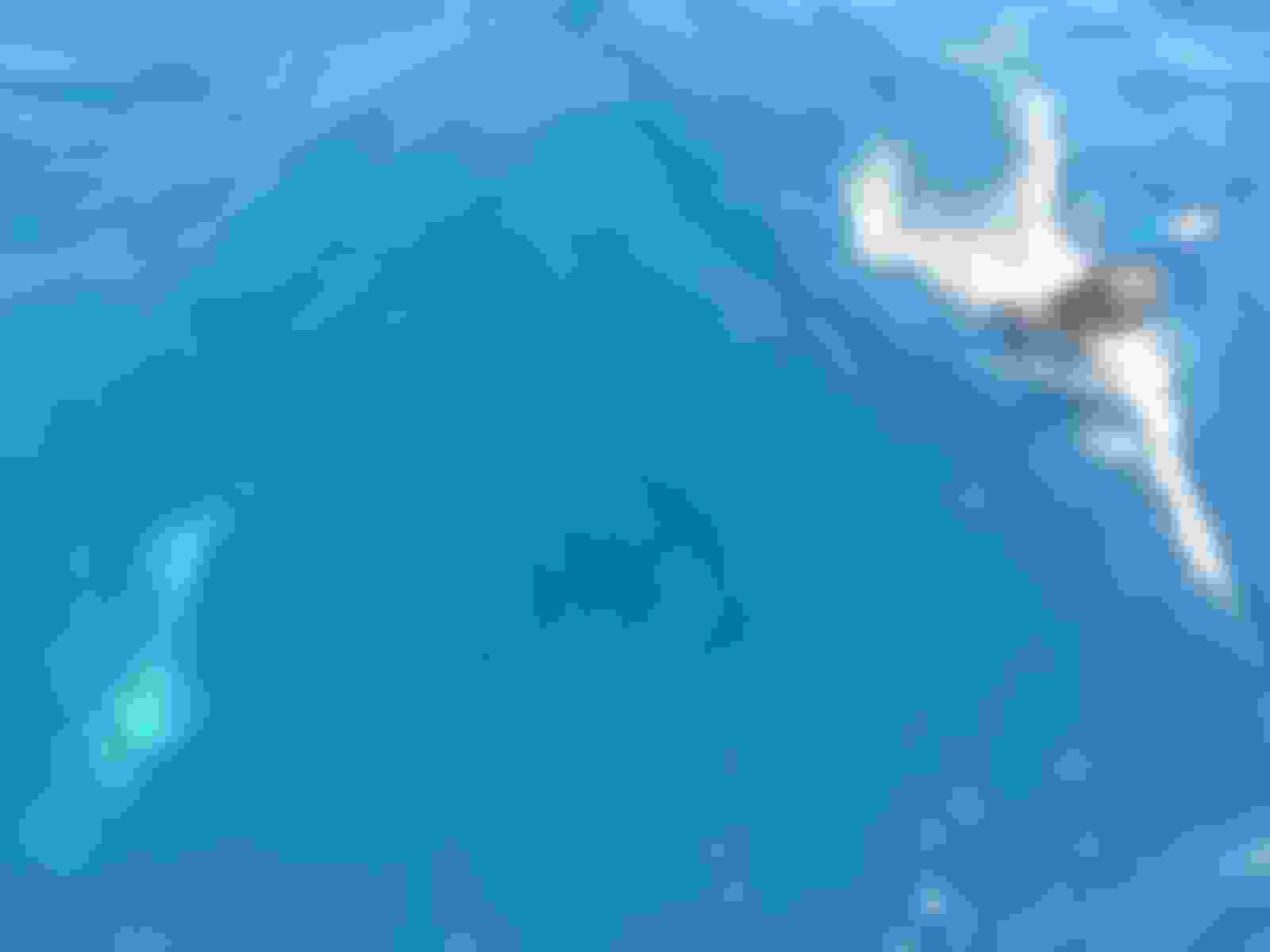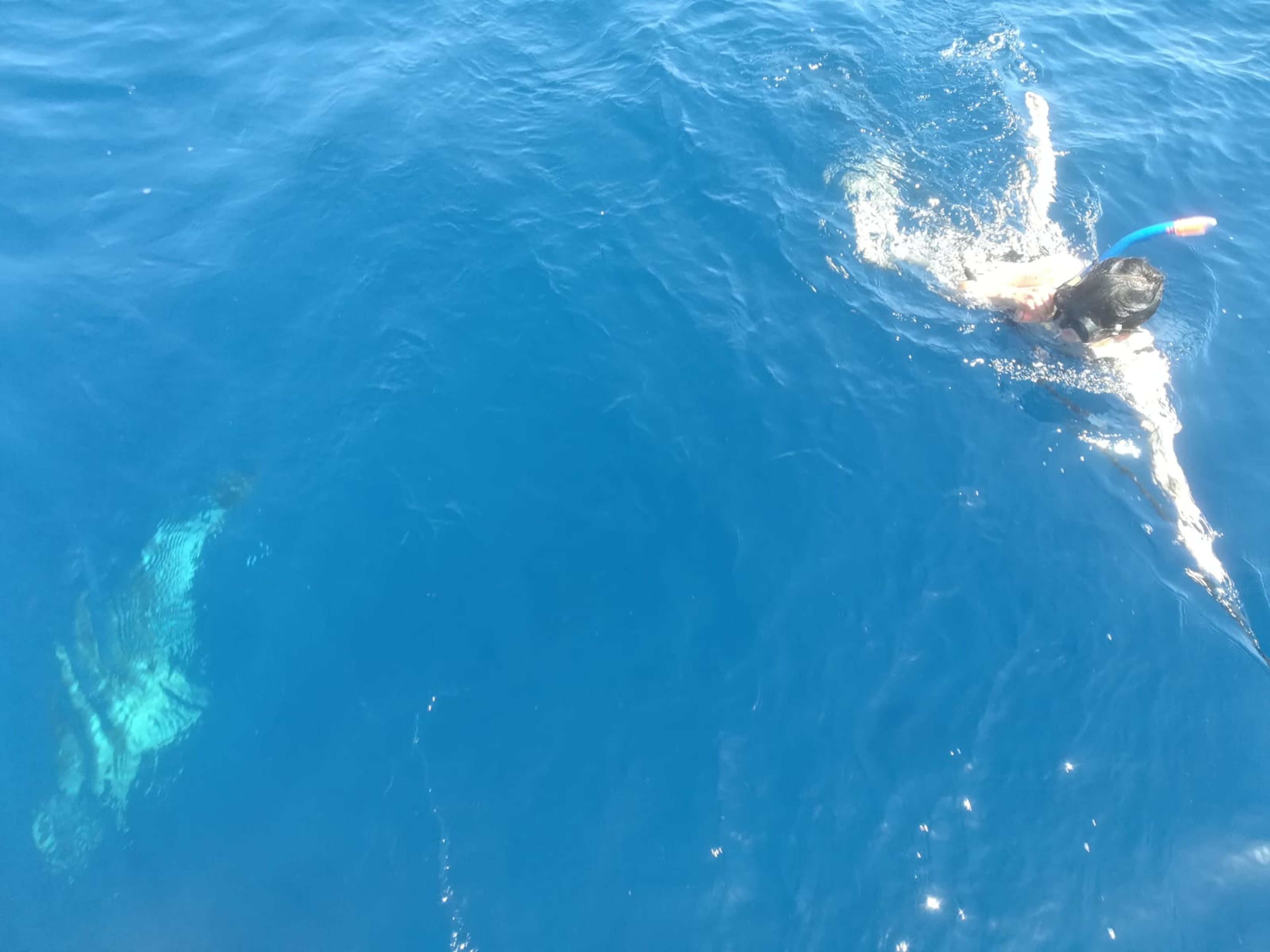Restore, Rebuild is a collection which contains four projects; Humming, The Stone has Shattered, A Nosy Nose Knows, and Cored. It analyzes my experience with issues surrounding body image, in search for psychological well being and therapy.
- TitleRestore, Rebuild
- Type(s)
- Agenda
- Year(s)2019–2022
- LocationVeneto, Italy
- ReferencesMark Fisher, Capitalist Realism, Dr. Tsabary Shefali, Dr. Gabor Mate
Stone Has Shattered
“And the weight in my stomach feels like a stone—a stone l've been trying to chisel at for years now, to remove from my body so I can finally, maybe for the first time since I was a child, take a deep full breath and feel freedom. I just want it out—I can’t keep feeling this tension and the inability to be fully open. I think the anxiety of wondering when the fish will try eating me replaces the anxiety I feel when thinking of my family. I feel like they are farther and farther away. I hear the noise of their voices, but their anger slowly fades. I hope the rock in my stomach will eventually fade into powder and float out of my body through my breath. I think the sea will help. It feels like it’s loosening something within me. Even though I feel sad, I am also feeling more myself, my own self—not connected to the past but to the present. Each of us lives our own life, and we choose how much we want others to affect it. I am learning not to be affected by others and to stay within myself, a self surrounded by the sea—alone, but not with the fear or nightmares that I had for so long. There is no fear of abandonment, of being left at sea. I feel that I am in the middle of an ocean of choices. It is here that I feel connected to the world, to life, to nature, to purity, and to the unknown.”
This project reflects upon my process of letting go of my family and releasing the weight of their expectations of me. For years, I carried their voices within me everywhere, their whispers inflecting my opinions of my career, appearance, and lifestyle. Their influence came to be an almost tangible presence in my body—a stone lodged in my stomach, lungs, or throat. It has taken a long time to chip away at the bonds of blood that tie me to them.
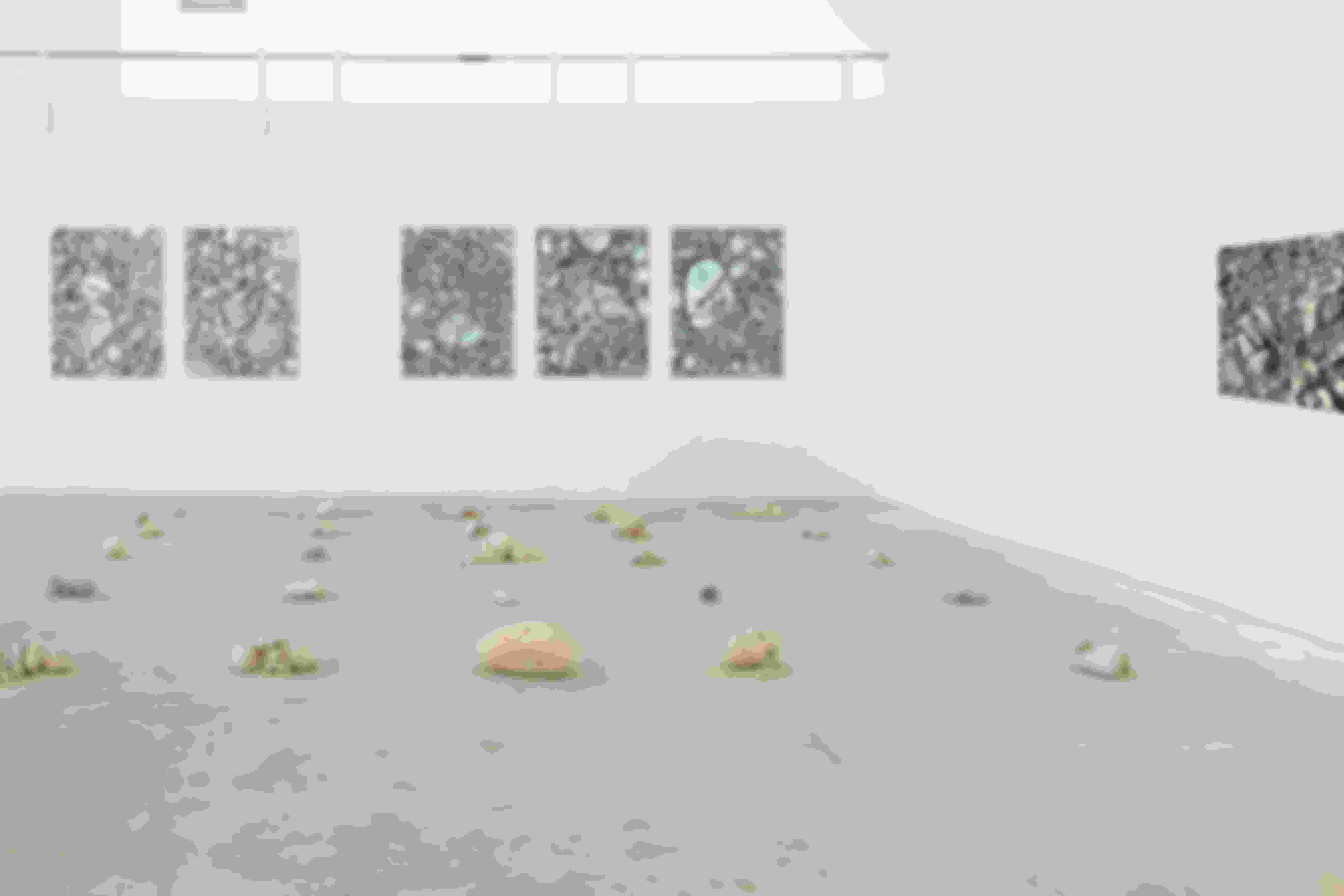
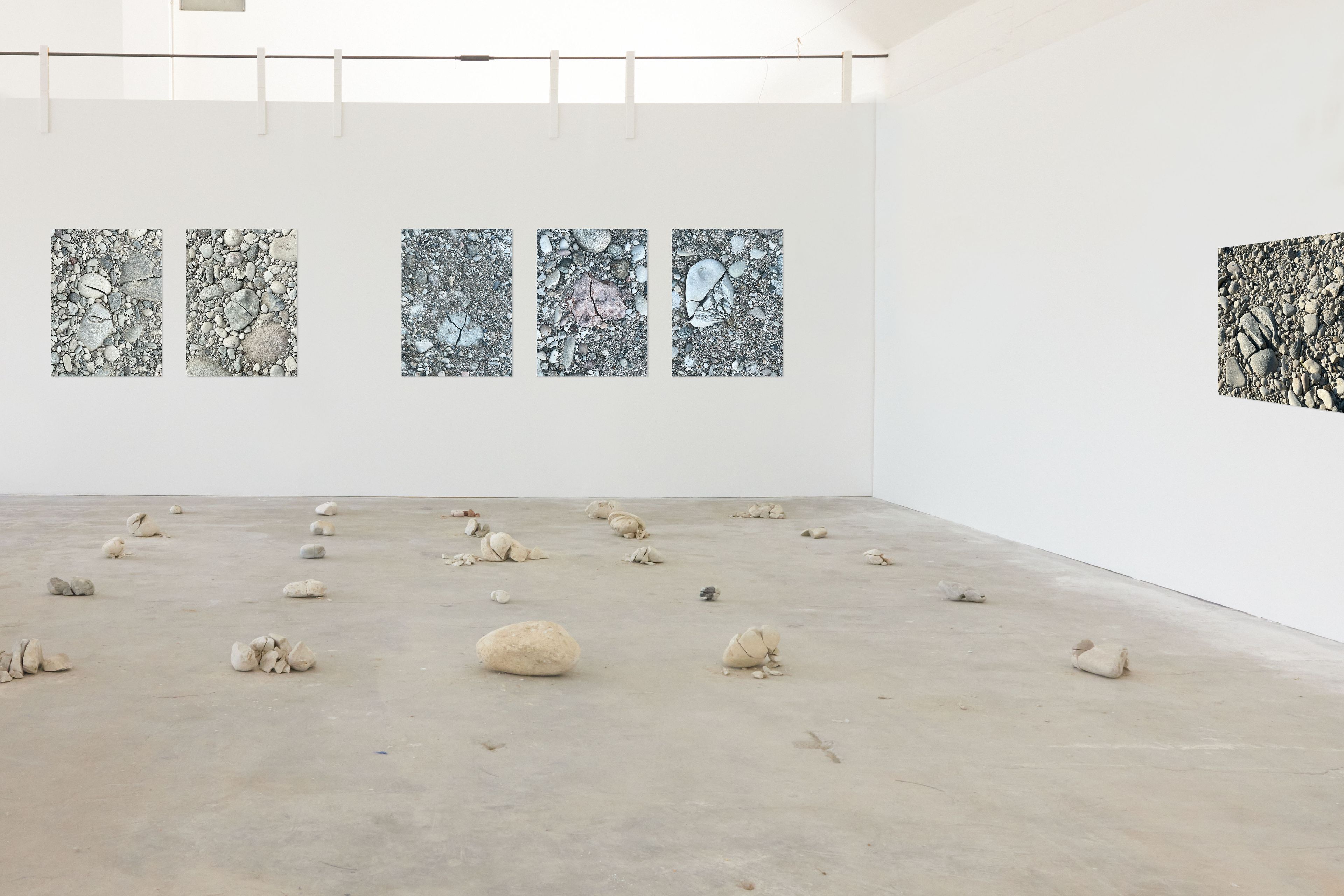
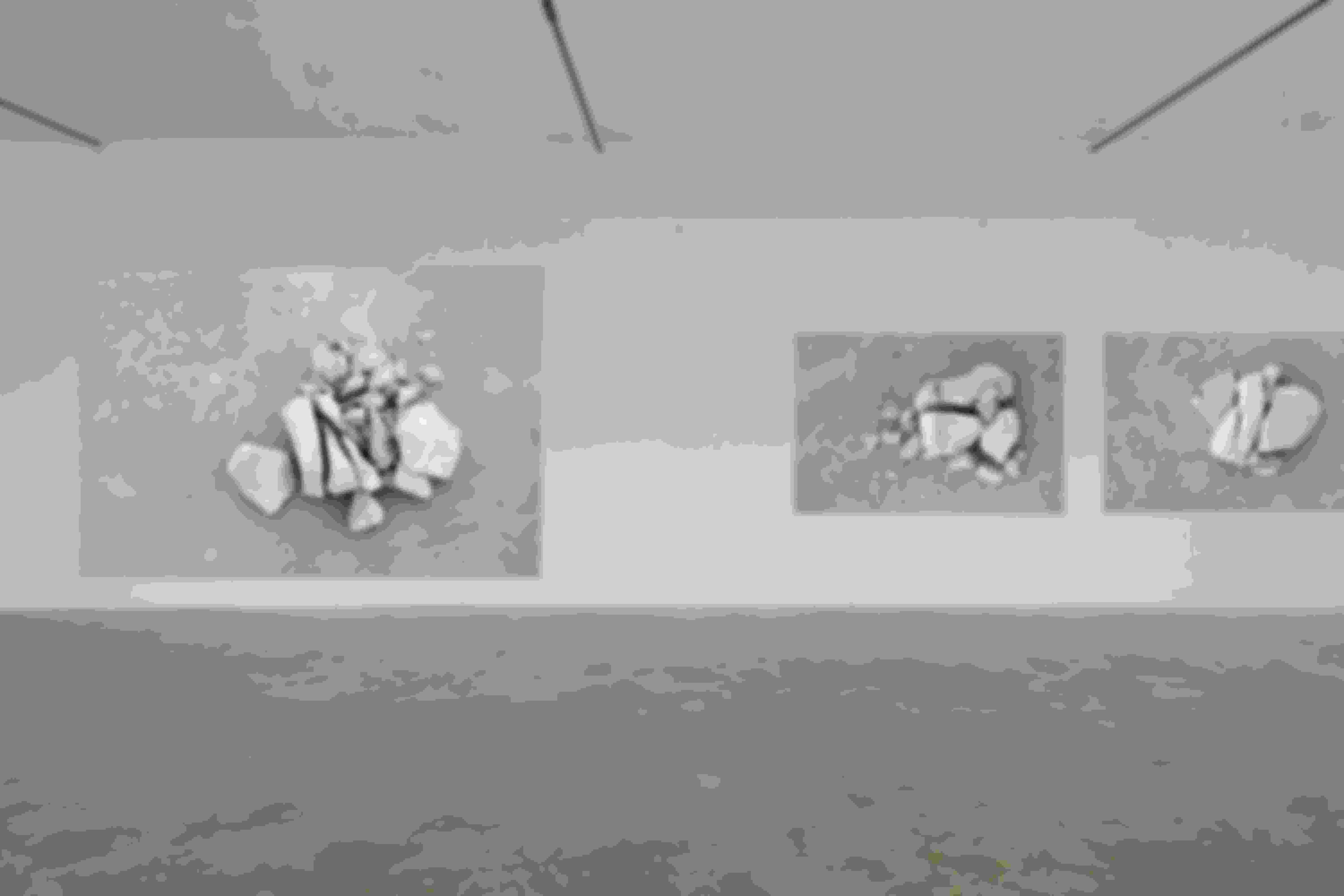
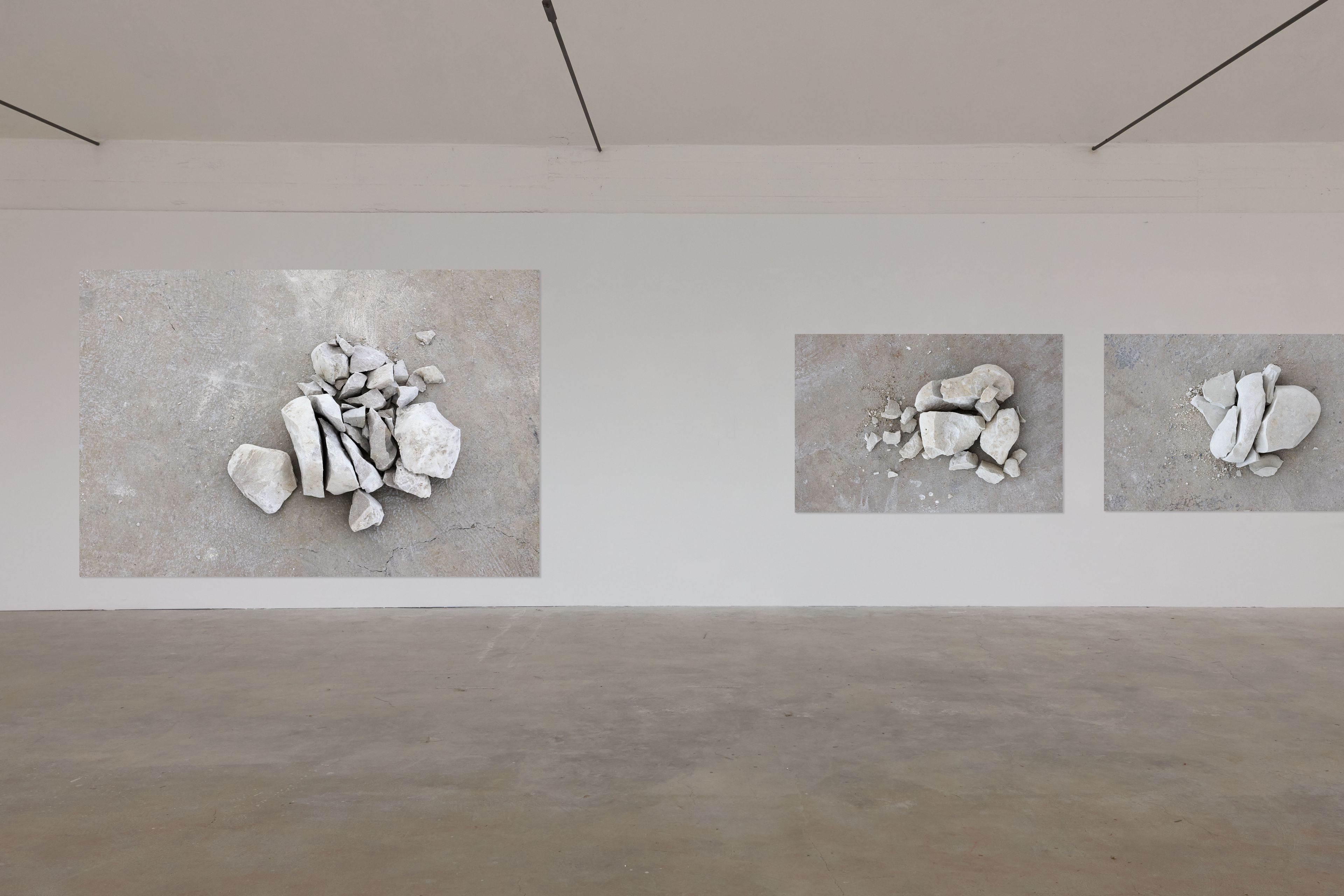
I have illustrated this progress towards liberation in a sculptural installation of shattered rocks, which symbolize the dissolution of the different pressures that snatched at my consciousness and kept me from hearing myself. The sculptures are accompanied by an audio recording based on an Eye Movement Desensitization and Reprocessing (EMDR) therapy session, in which I describe and work through a past trauma.
Resounding throughout the space, the volume on the recording gradually increases over several minutes, peaking at an oppressively loud level before falling again. In part, this manipulation of the audio illustrates how overwhelmed I was by my family’s power, while also referring formally to the iterative crest and trough of the sound of the ocean, where I first began to feel free.
Audio available upon request
Reprogramming
I have been called “Bitch” too many times in my life—often by people who owed me their respect or even their support. It took me a long time to realize that these forms of verbal abuse were not about me at all, but about the fact that I had questioned, challenged, outsmarted, or spoken back to a man. Their pride had been hurt—so they decided to hurt me. This video work documents my process of unlearning years of internalized insults, of recognizing my own power and resolving that I won’t let anyone take it away.
In an empty, white-walled room, I walk up to a blackboard with a piece of chalk in my hand. On the vacant, black surface, I write the words, “You’re a bitch.” I stand back a moment, as though considering the words I have just written. Then I erase the sentence. I write it again. Erase. I repeat this series of actions, writing then erasing the same phrase repeatedly, until there is no chalk left. I get another piece of chalk. This time, I write, “You’re wise.” I write this phrase again and again, allowing the board to fill up with the words. I write until there are only slivers of blank space in a sea of chalky marks.
I consider this piece both a video work and an event score, one which I invite others to perform publicly or privately.
Instructions
1.
Walk to the chalkboard.
2.
Take a piece of chalk. Write a phrase that someone has wrongfully said to you—or something that you would like to stop believing about yourself.
3.
Erase the phrase
4.
Repeat this process, writing the phrase and erasing it until the chalk runs out
5.
Erase the board completely
6.
Pick up another piece of chalk. Write the words that you want to believe in, words that describe the person that you are or the one that you want to be
7.
Write this phrase over and over again so that the words accumulate on the board, building gradually, filling up the vacant spaces. Write until there are no unwritten spaces, until the blackboard is entirely covered in chalk.
A Nosy Nose & Cored
A Nosy Nose Knows and Cored is about accepting individual beauty in all the forms that it takes. Through rhinoplasty and anorexia, this art project became a type of thearpy in accepting how I treated my past self and the adjustments made on my physical appearance at a young age. The psychological effects that these experiences had are explored in this body of work, to allow others who are struggling, a place to connect and converse on these important issues that many women and men struggle with.
A Nosy Nose Knows
At fifteen, I got a nose job. I remember the day I decided to have this surgery, I stood in my room, I looked into my dresser’s three-way mirror, trying to understand if I was making the right decision. I had never thought so much about that feature of my body before. I have regretted the decision that I made many times since—though I don’t blame my younger self for being led by the doubts or ideals of others. I didn’t think, then, about the ways that our facial features link us to the other members of our family or offer a glimpse of distant ancestors. At that moment, I felt only that my nose had somehow, without my knowledge, grown to ungainly proportions—that it was my most noticeable and least attractive feature.
For years, the market has instrumentalized the insecurities of men and women alike, preying on the desire to achieve some unattainable ideal. Barbara Kruger’s iconic body of red, black, and white silkscreens have critiqued the capitalist tactics that compel us to keep consuming products that promise a whiter smile, a flatter belly, a smaller nose. As stated in one of Kruger’s most renowned works, a print from 1989, “.” In a performance, I carve a nose from stone, referring to a projection of a painted nose shape—my face in profile—as if rehearsing the operation that the doctor performed on me so many years ago.
A Nosy Nose Knows is about accepting individual beauty in all the forms that it takes. Ceramic noses rest atop discarded pieces of cashmere, canvas, linen, and wood panels. In the painted image, the contours of my face are outlined by a background of “Venetian Red,” a color that has been used for thousands of years and which was originally made from an iron oxide clay quarried near Venice. Here it appears somehow bloody, like the ties of family or like the fluid that seeped from my body during that surgery in 2001.
A nosy nose knows
A nose blows and flows
A garden hose and a rose
Like a rose a nose shows how it grows
A nosing nose
A nose knows its morning brose
And cups of Joe’s, Cheerios, and afternoon gose
The Canadian snows that froze
As I doze under the throws
With a toe that shows
I arose with the lowes
…. (pause)
To a new nose day,
Today a nose knows no noes
Close to it’s beaus
The crows are it’s only foes
A nose can pose for The Row’s photos
Choose its clothes and bows
The nose throes when one owes to those who sows
But not for bros
Ladies only for the woes
This nose slows,
Another grows
I’ll never be a Ms. Monroe,
Perhaps a painting from Miro
… (pause)
Exposed am I now,
Disclosed are the bios that tie me to those
To those who have opposed,
Pretending to bestow.
Elbows on the table,
Listening to verbose,
Hopes for a transpose,
But always deposed.
Enclosed for years,
But now I am composed when in repose
A nosy nose knows
Cored
For a time, my new nose did make me feel more beautiful. I tried modeling. I still remember the way the woman at the agency looked me over and said, “Yes, I think that’s better.” They took down my measurements, a series of numbers that seemed to say, without saying anything at all, that I wasn’t proportional, beautiful, or right. I began to work at those numbers, massage them. I tried breast enhancement pills, running, and eating less. That last came to be a problem in time. My mother would give me lunch money, which I squirreled away. No lunch, just an apple. I became a connoisseur of sorts—Pink Lady, Gala, Granny Smith, Jonagold.
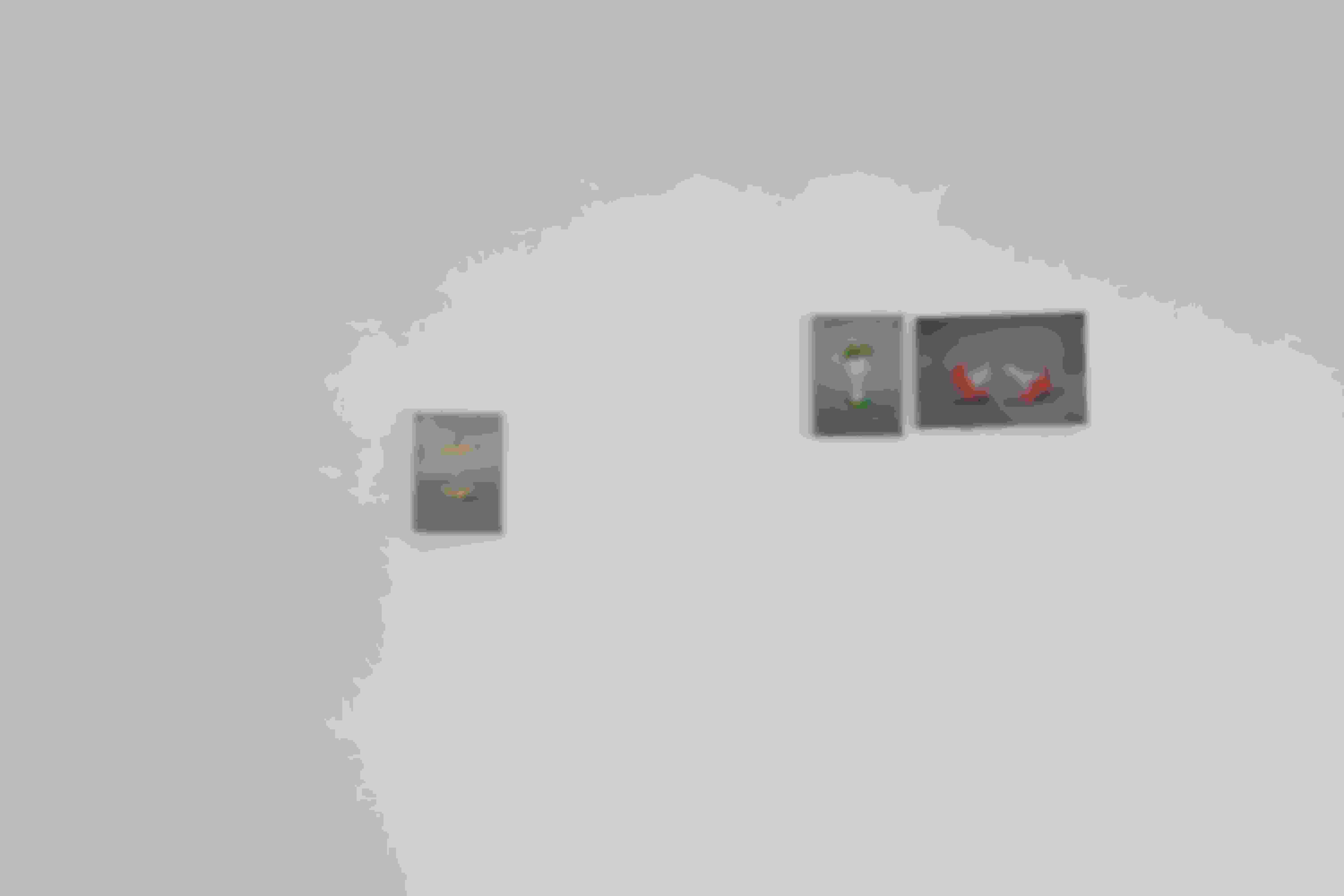
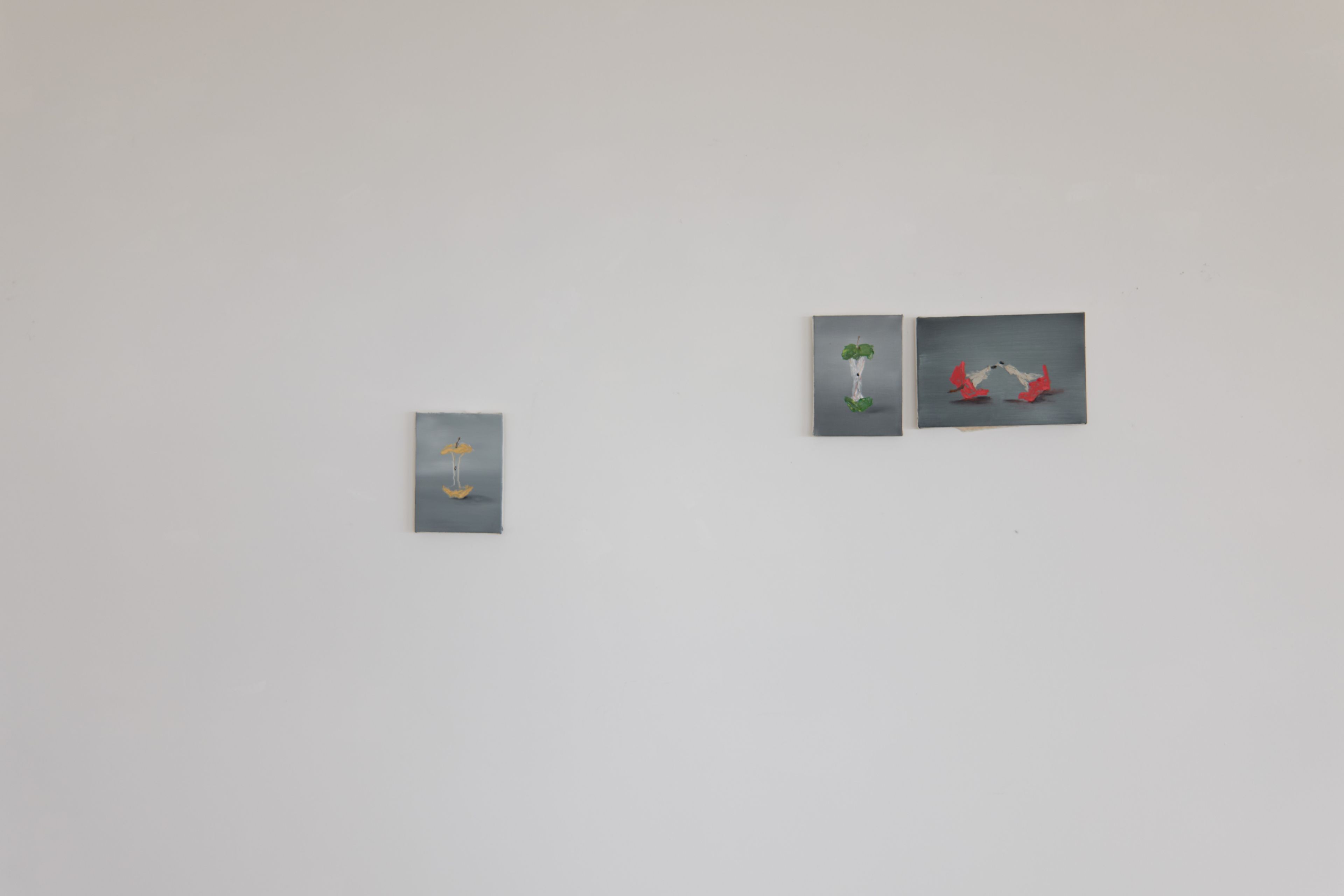
Cored draws on this struggle with anorexia. Starving my own body, I was exhausted all the time, almost without the energy to speak. When I allowed myself to eat an apple, I would turn it into a game of sorts, eating as much as I could around the core, while still making sure the fruit could still stand on its own. In retrospect, I think this act was an unwitting metaphor for my own body. I dared myself to get as thin as possible, without allowing my body to break in two.
Humming
For all the power of language, I am also interested in that which strays from its overdetermined modes of expression. Between the ages of eight and fourteen, I was , speaking only to those with whom I felt comfortable and in a low whisper to others.
During those years, I frequently hummed to keep myself company, making up wordless tunes, filling the silence that seemed to surround me with these open-mouth melodies and rhythms. Since then, I have frequently thought of this gesture and what it suggests about the fundamental sociality of speaking and hearing, even when the person you are addressing is yourself. Though I rarely spoke to others, this musical vocalization kept me from feeling alone. Sometimes I still catch myself inventing ditties when I am by myself, working songs that amplify the energy of a task.
I am interested in how a sound work made from this memory—in which I record this almost unconscious form of music—can actualize a social space for myself and for the listener, even though we are never in direct contact. I also see this work as entering a dialogue with Adrian Piper’s Humming Room, which thematizes the creative act carried out within policed and limited confines. Likewise, my work is in part a response to the gendered hierarchies that, in literal ways, stifled my voice and expression as a child.
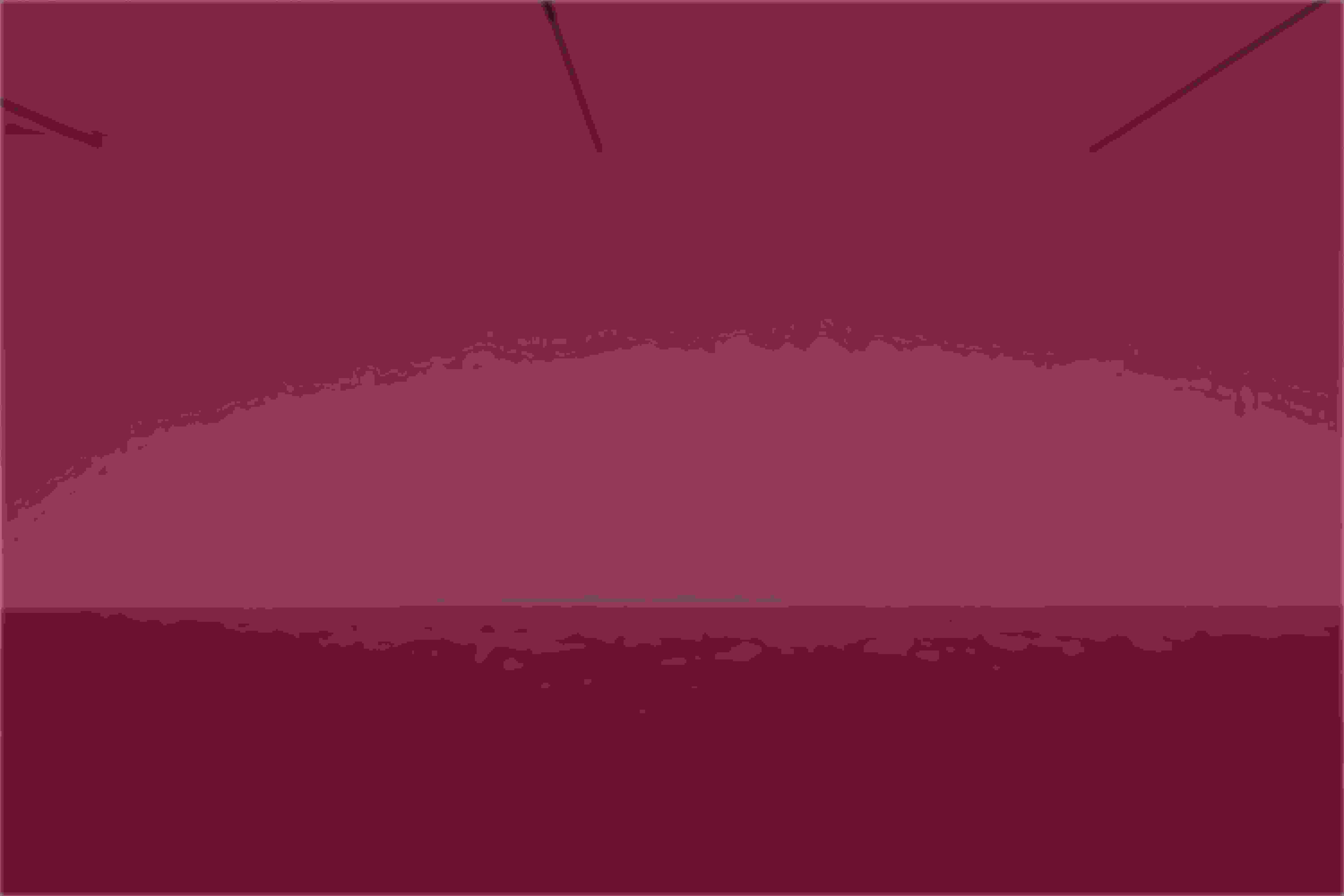
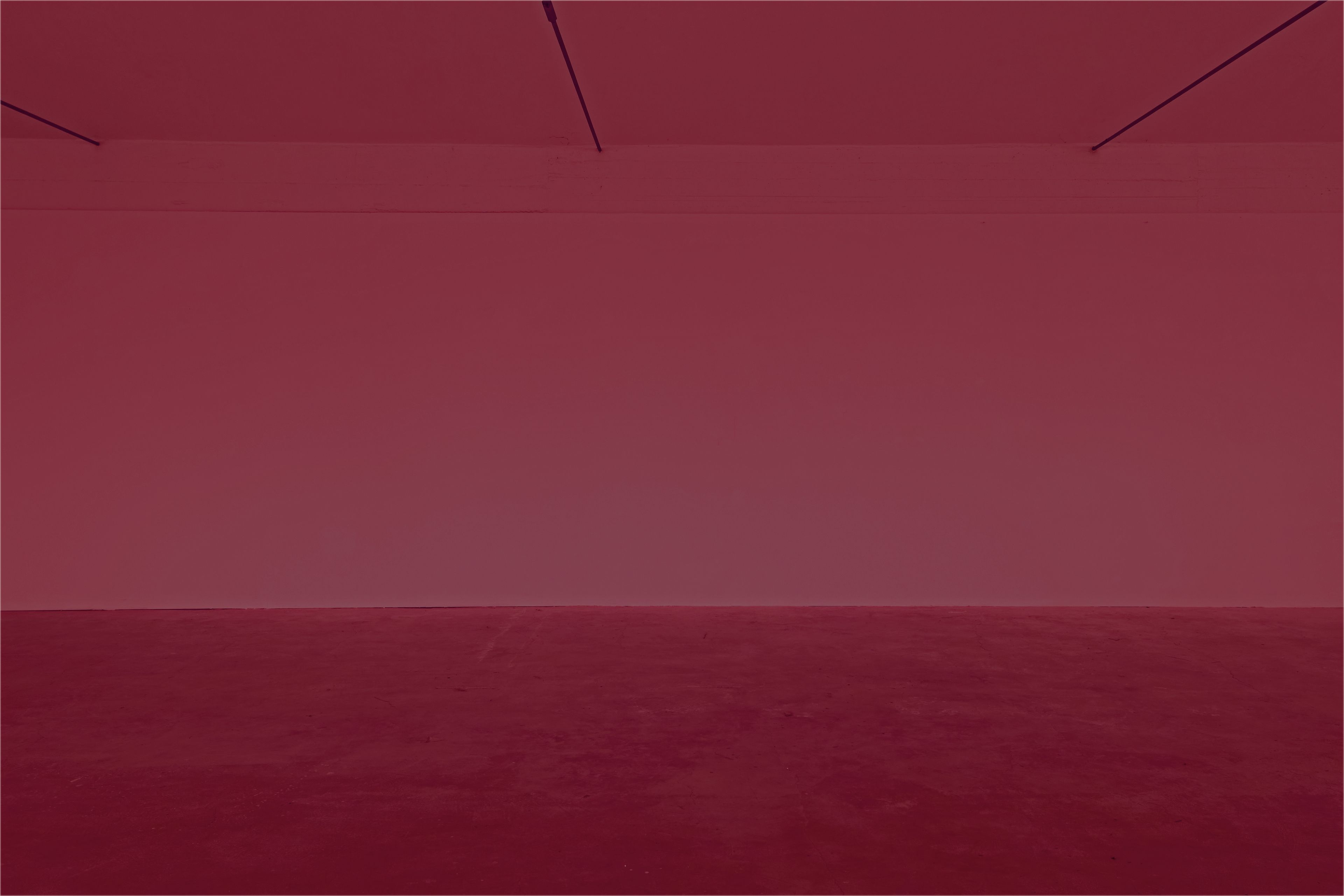
Light and sound installation
The word animalis is a Latin word and means ‘having breath’. It also is the origin word for animal. How can a relationship with an animal alter that ways in which we live? From a pet such as my dog Artemisia, to a horse, to a pod of dolphins; this project examines how animals communicate with us taking you on a journey through my relationships with animals who had a drastic impact on my life.
The noun from Latin animal, based on Latin animalis ‘having breath’ from anima ‘breath’; the adjective via Old French from Latin animalis.
Animals we Love are the same as the Animals we Eat
Artemisia, my year-old Vizsla, sprawls out on a splayed cowhide. Nude, I perch on a pink swathe of suede. Many people will not purchase leather, even though they still consume meat. What they don’t realize is that leather is considered a remnant, a coproduct of the meat industry. 72 billion animals are killed worldwide every year for human consumption. Though people express misgivings over purchasing leather or fur products, few will forgo a meal with chicken, beef, or pork.
By a similar illogic, I know people who have no qualms about the ingestion of meat or animal products—yet simultaneously love their cat or dog like family. I don’t understand this disconnection between the animals that we live with and the animals that we happily consume. All are the same. I would even argue that we too are animals—or, to put it another way, that animals also have minds and souls.
This performance work challenges the viewer to acknowledge the parity between human and animal beings by drawing direct parallels between the human body and these animal hides.
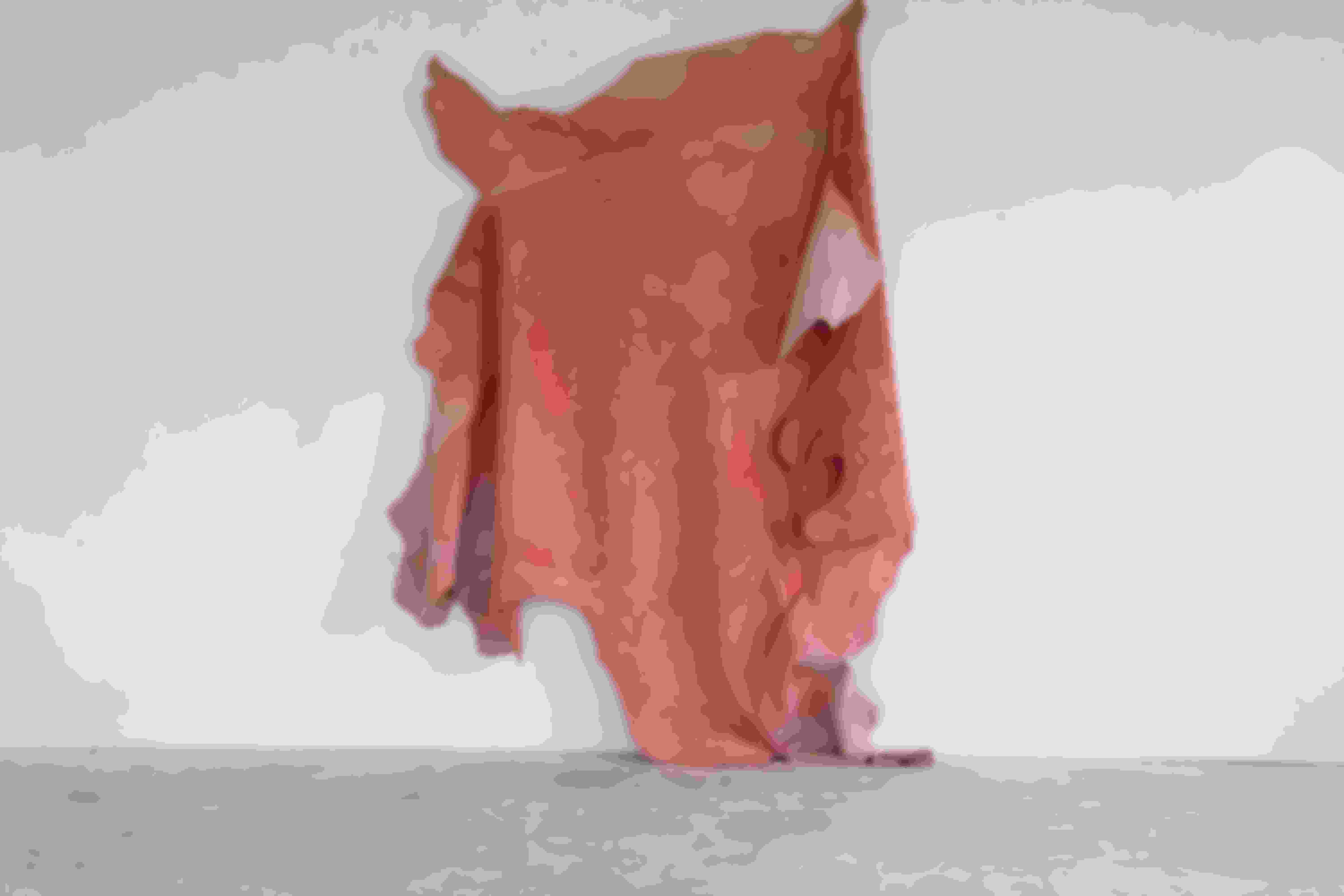
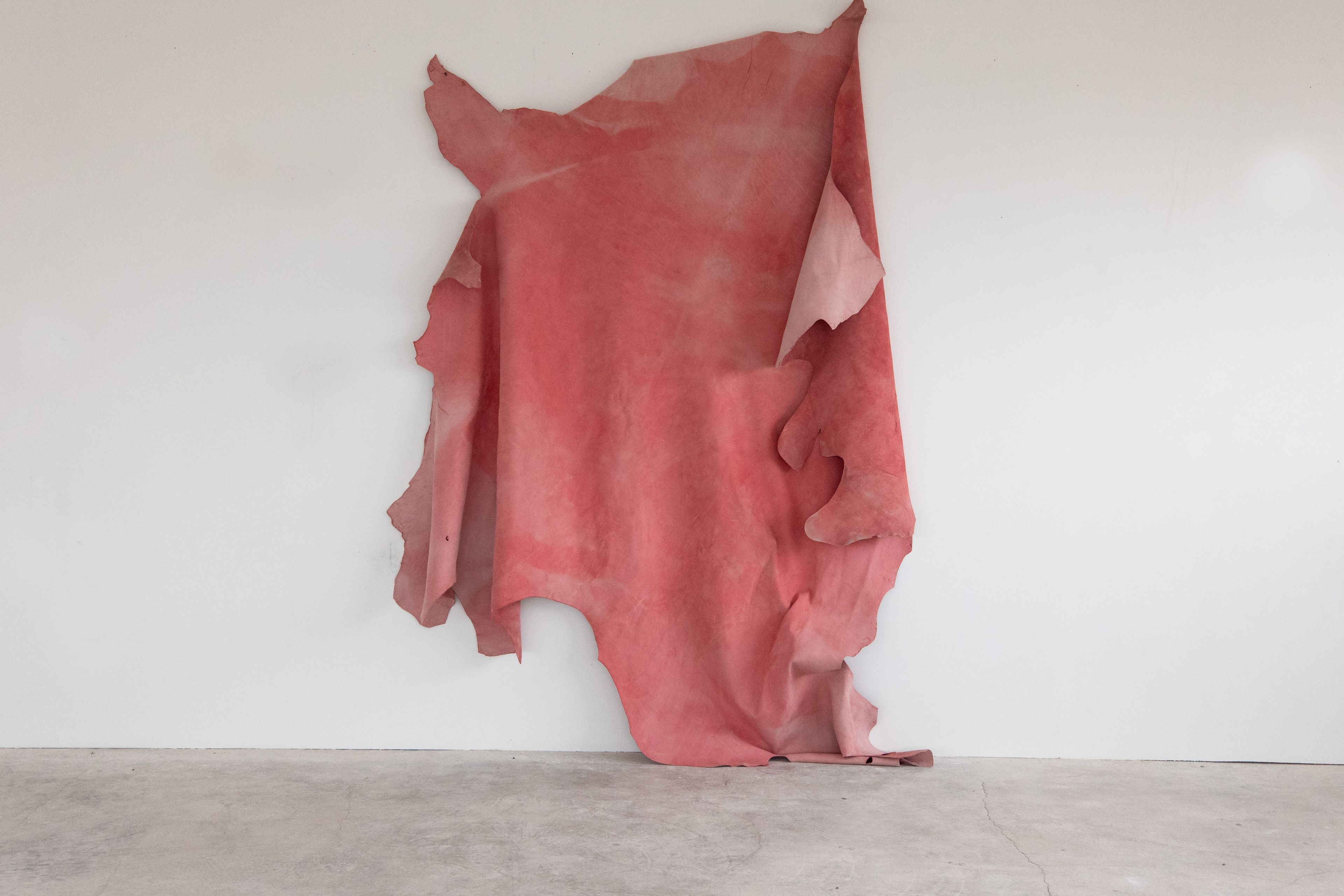
Mirroring
This tapestry artwork, crafted from discarded cashmere sourced from the Lake Como region and discarded silk from nearby Venice, speaks volumes about sustainability, conscious consumption, and the timeless value of quality craftsmanship. By repurposing luxurious materials that would otherwise go to waste, this art challenges conventional notions of consumption and underscores the importance of making mindful choices in a world driven by excess. This emphasis on quality over quantity not only elevates the aesthetic and tactile experience of your tapestries but also encourages a deeper appreciation for sustainable practices and the inherent beauty found in repurposed materials.
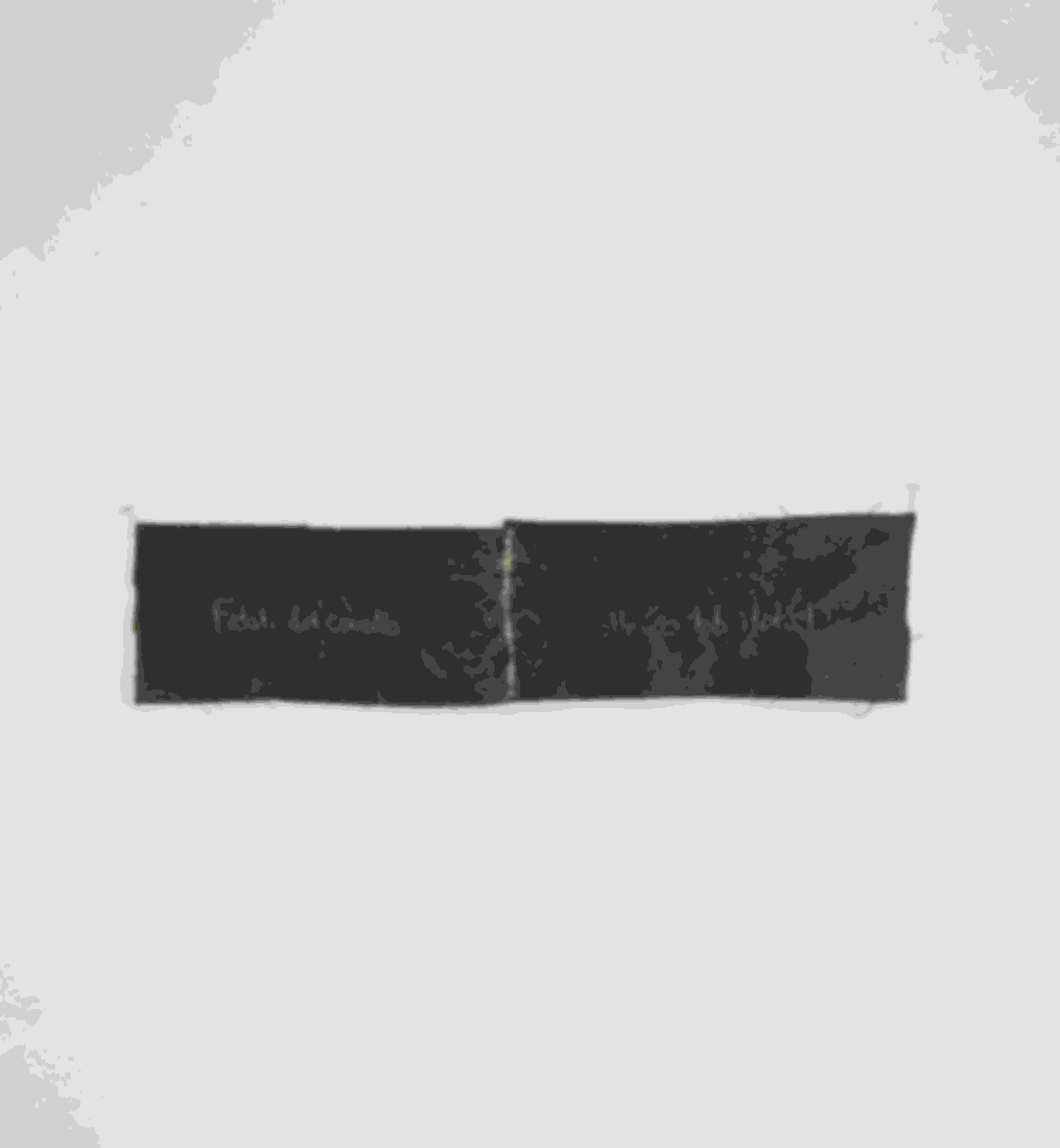
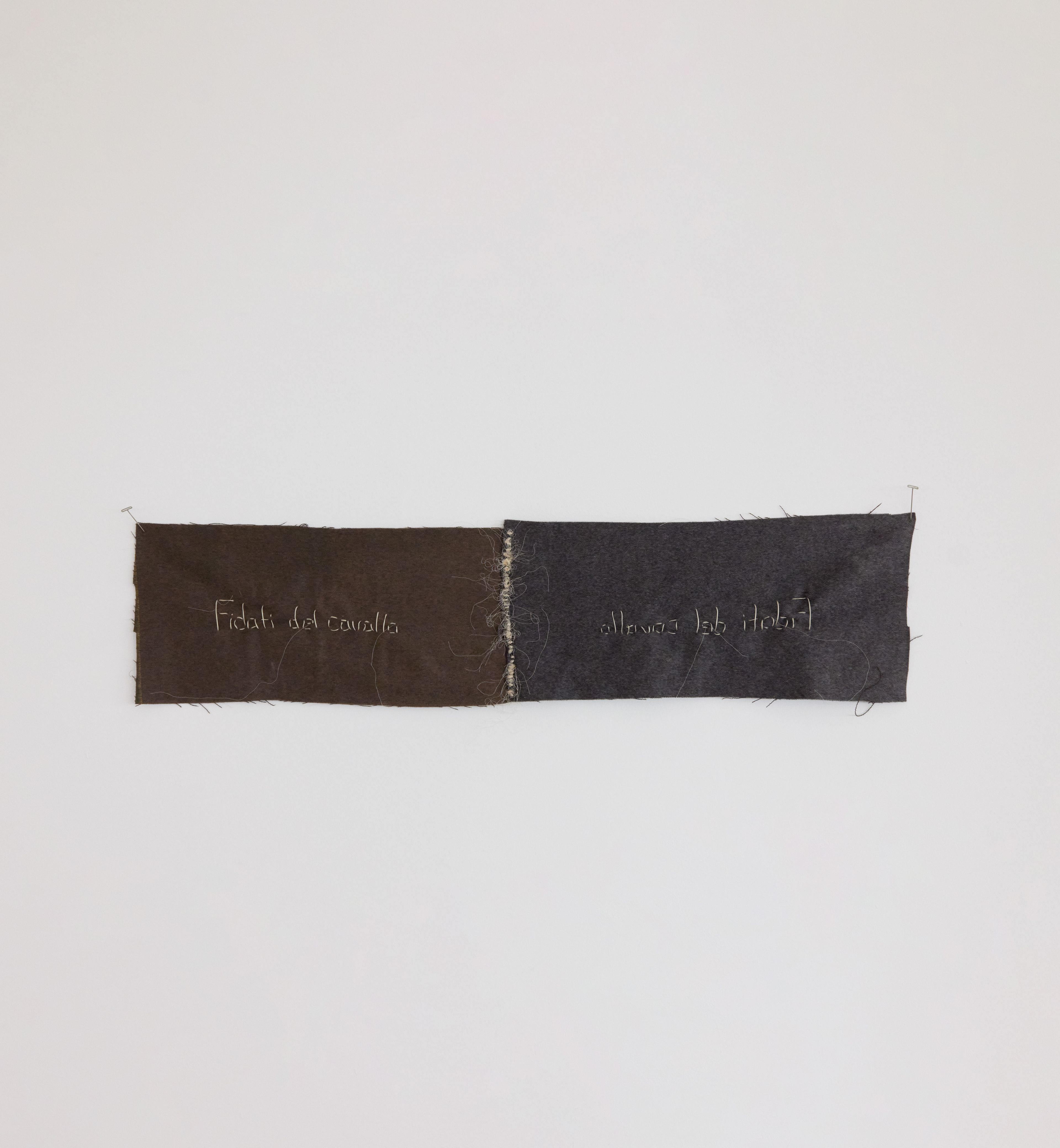
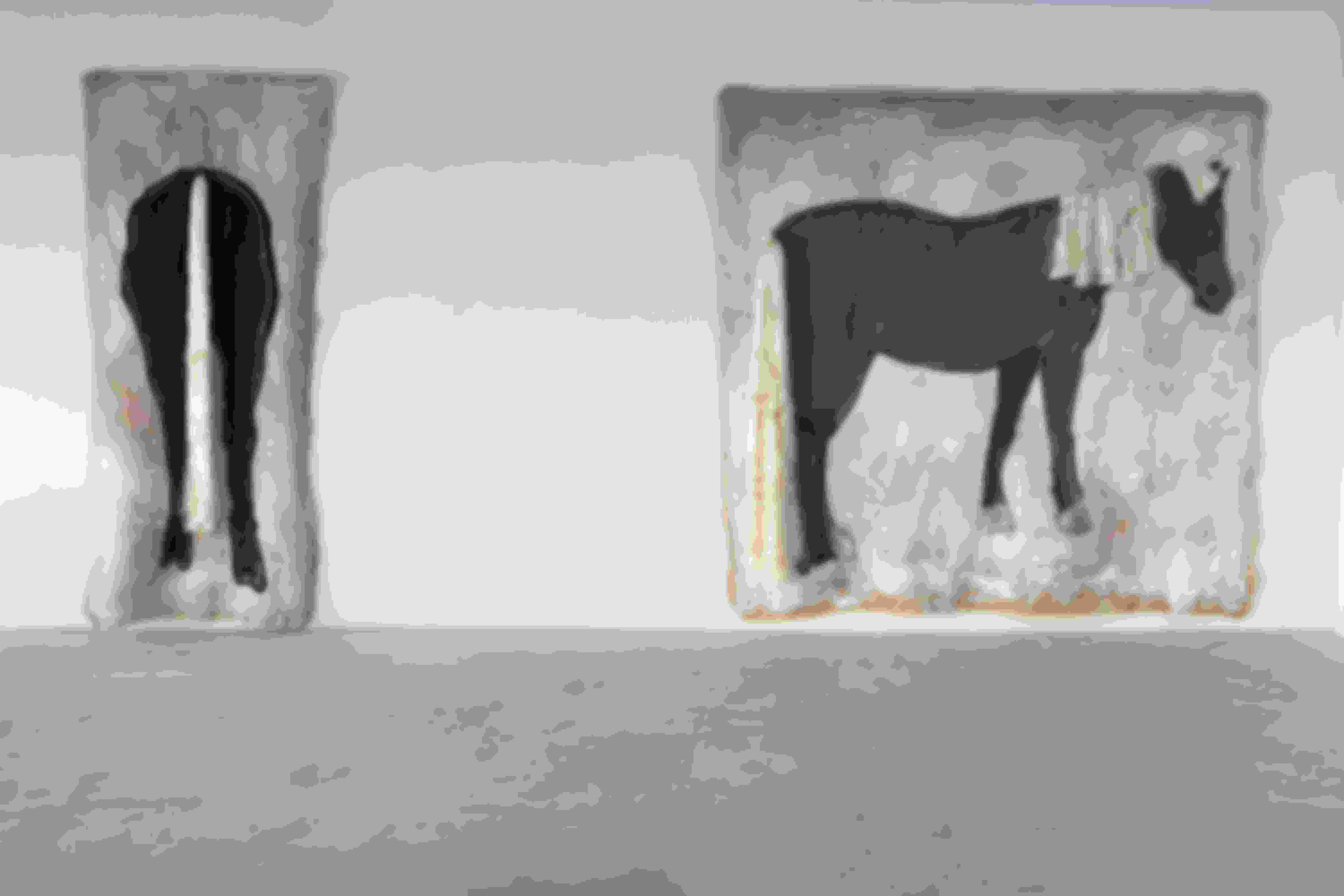
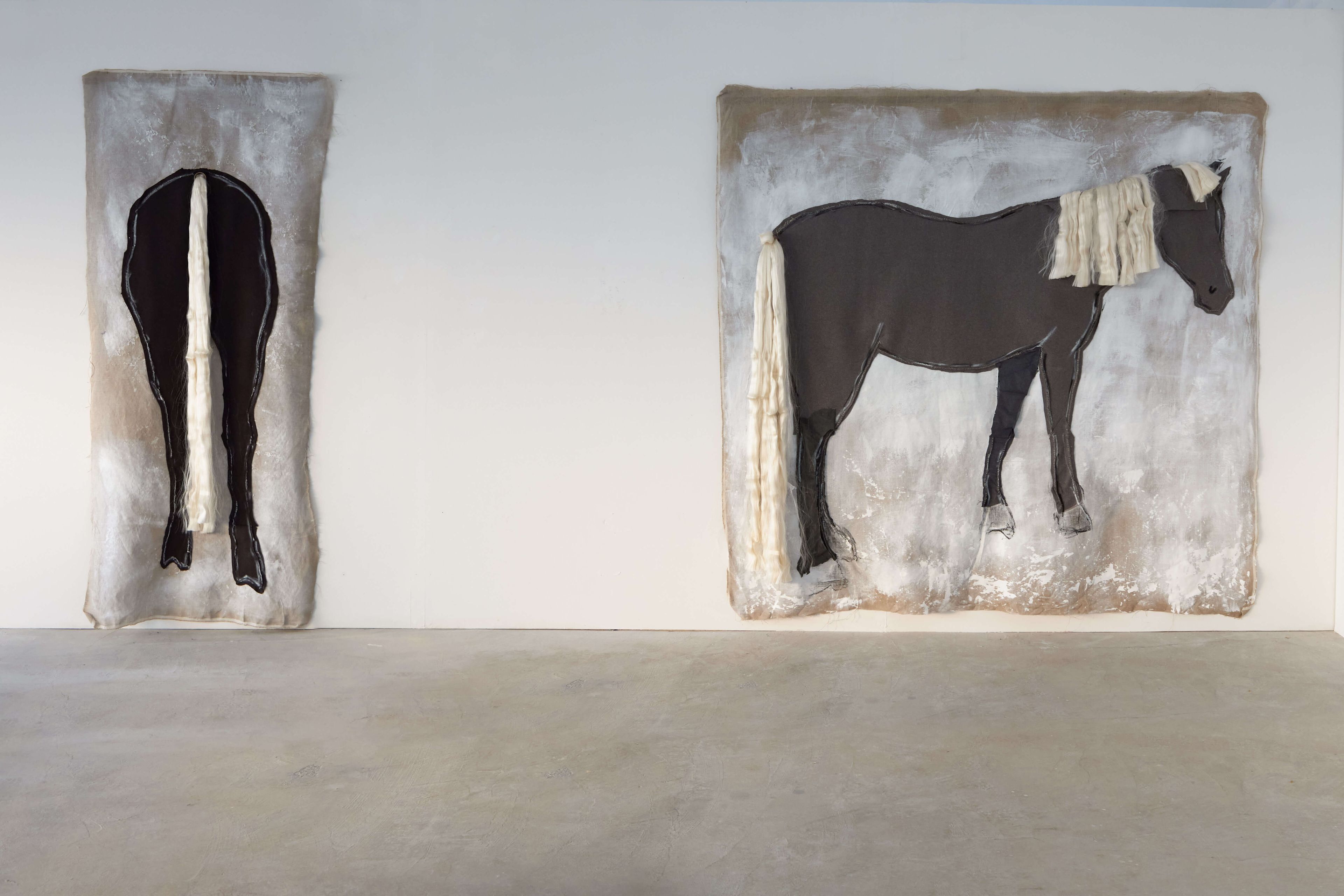
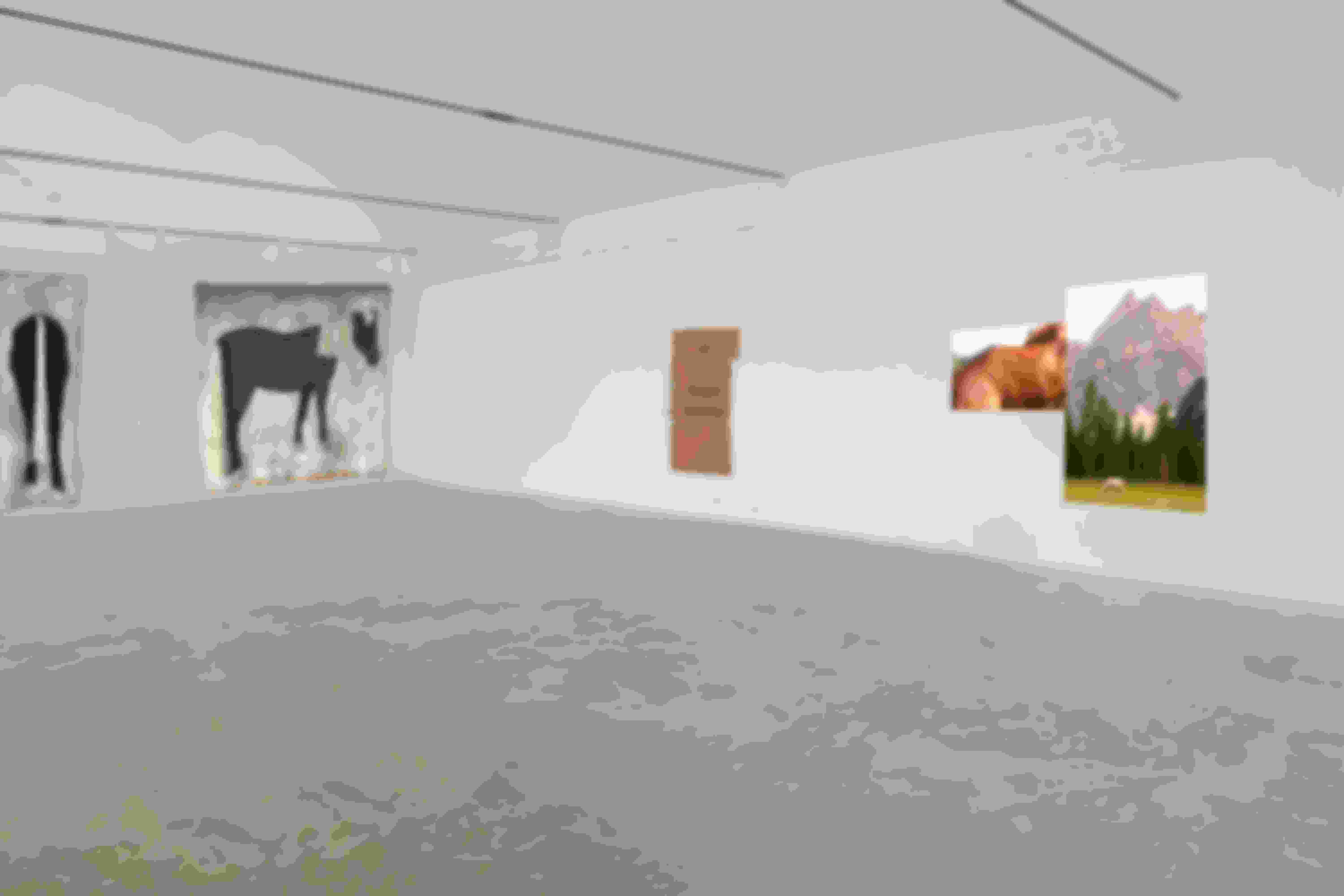
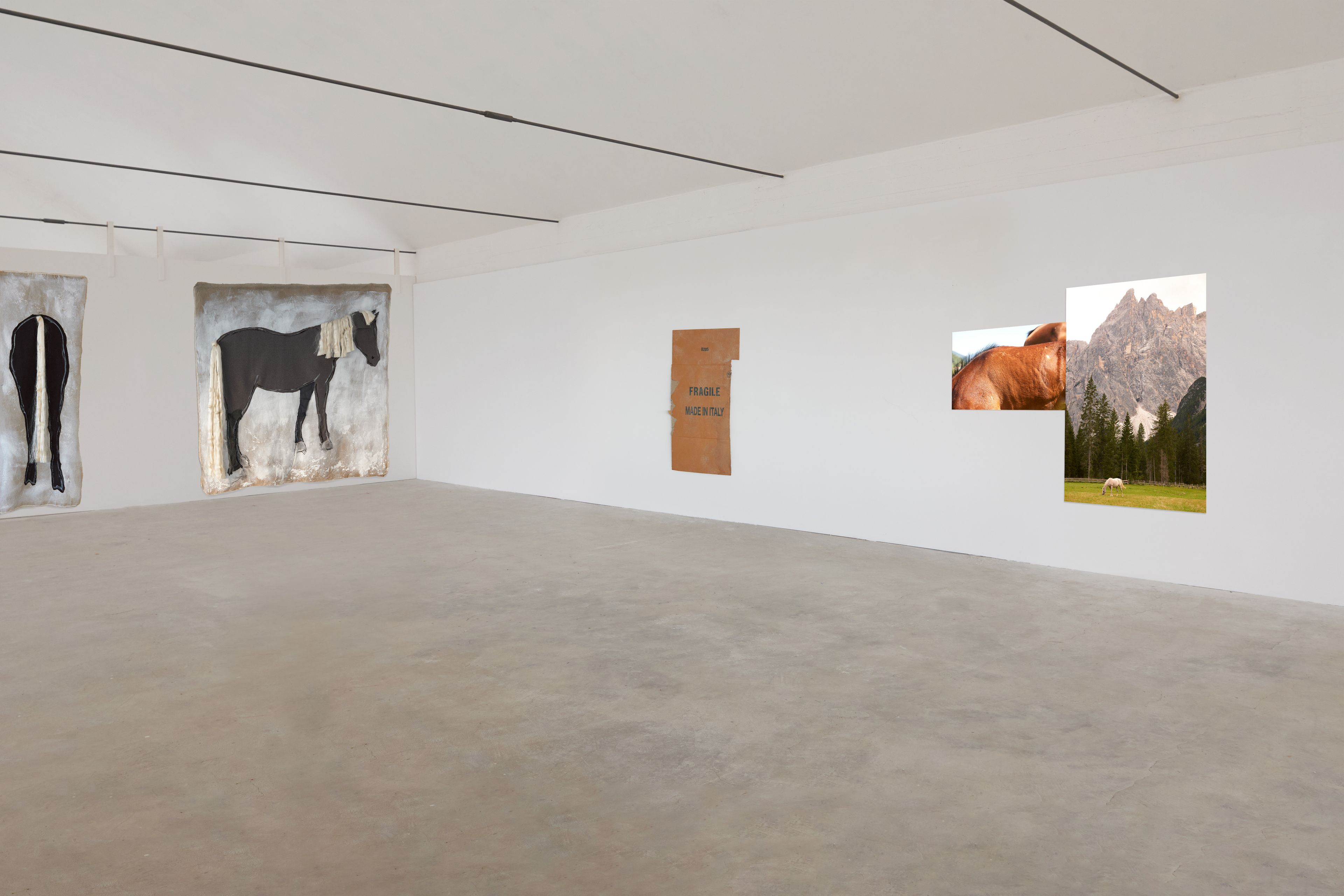
China first produced silk in 3000 BCE. Extremely light, it was easy to transport long distances, while its rich quality and high cost made it the ideal basis for monetary value, used frequently as an alternative to state-issued coinage. Journeying the 4,000 miles of the route, merchants and nomads would travel in caravans of camels and horses loaded with exotic goods.
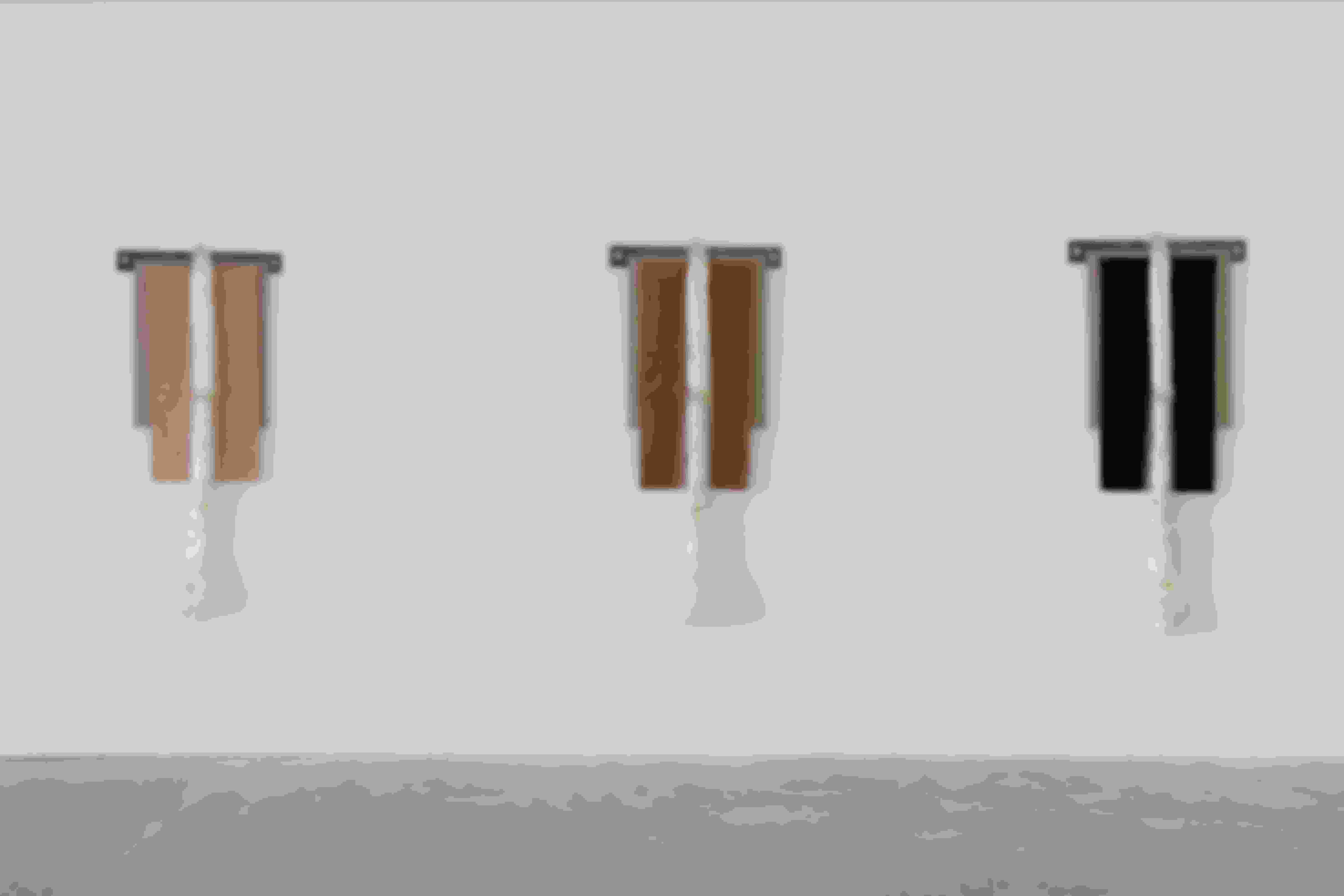
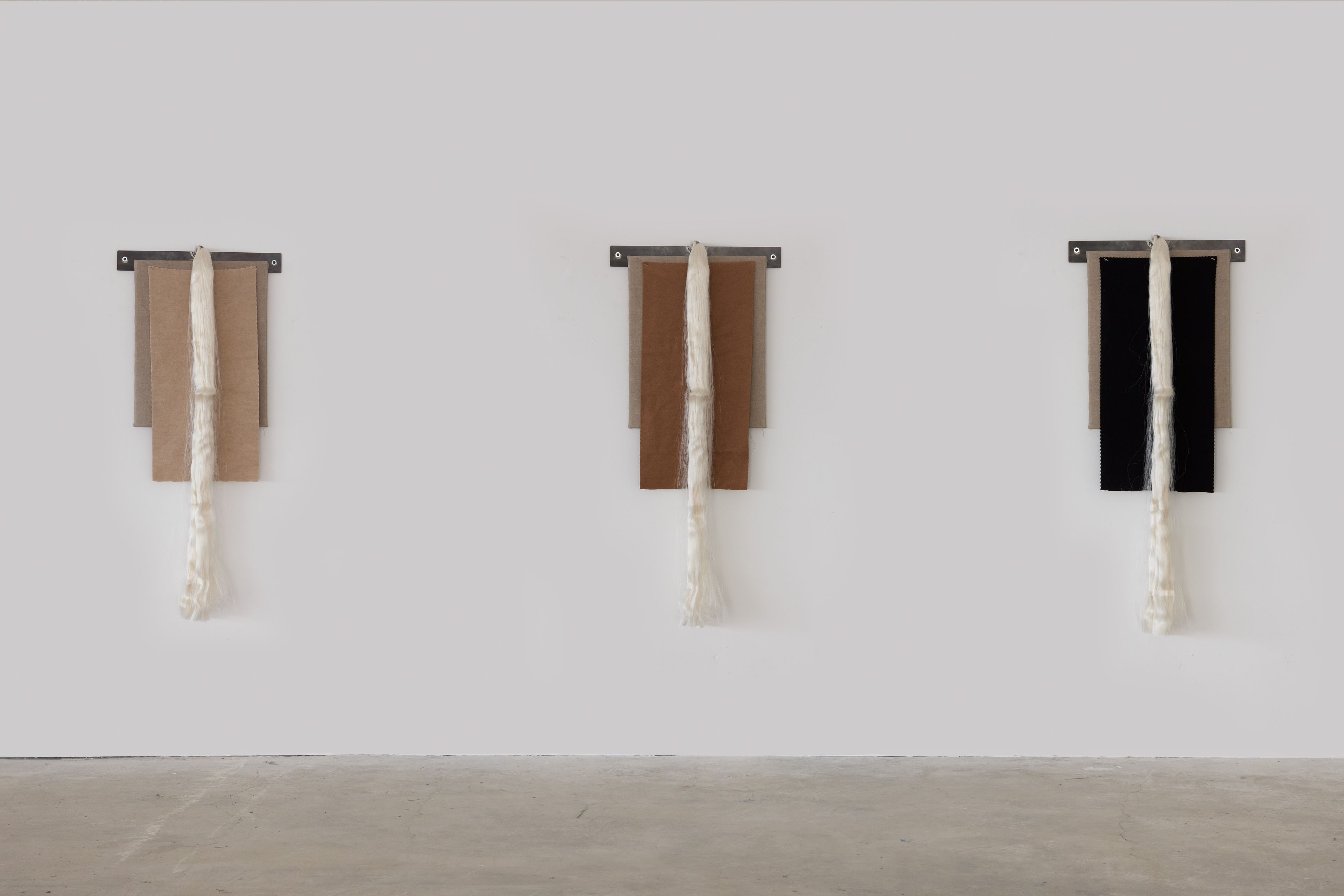
In Mirroring, I compare the cultural abundance of this historical route with our contemporary context of consumption and alienation. Placing luxurious textiles, such as cashmere and silk, in direct contrast with cardboard substrates, I simultaneously suggest the contemporary ease of exchange, while also implicating the estrangement latent in receiving commodities in a way that requires no human-to-human interaction. In the historical Silk Road, the flow of products was fundamentally linked to the movement of people. In today’s post-Fordist society, trade does not facilitate the expansion of mutual understanding by diverse peoples, merely the codependence and empowerment of nations vying for dominance.The market is merely capital without social benefit.
In this series of works, the cloth shapes take on the forms of horses. On the Silk Road, textiles could buy traders well-bred Mongolian or Tibetan horses—first domesticated circa 3700 BCE in Central Asia—which were so essential to traversing the long path from East to West. As herbivores that were historically preyed upon by humans, mountain lions, wild dogs, and bears, horses intuitively read and respond to the embodied, nonverbal cues of other animals in their environment. Horses readily match human emotions and, in so doing, can offer a rider insight into her own emotional state. It is often said that the horse becomes a mirror of the rider, the unconscious mind exposed through the horse’s behavior. I understand consumption today as an undiagnosed attempt to fill the void created by contemporary isolation. We seek happiness in material goods rather than in relationships, actions, or personal growth. However, the means by which we receive these objects—without needing to enter a space of encounter, delivered anonymously to our doorsteps—merely exacerbates the problem. As included in these works, the form of the horses is intended to prompt circumspection and self-reflection, considering the origins of our current market and envisioning what a better future would entail.
Title: Exploring Dimensions: The Intersection of Charcoal and Ceramic in Wall Art
In the realm of artistic expression, boundaries between dimensions blur, giving rise to captivating creations that challenge our perceptions and spark introspection. Such is the case with a unique wall artwork that seamlessly merges charcoal sketches with ceramic elements, inviting viewers into a world where two and three dimensions converge in a dance of illusion and self-discovery.
At first glance, the artwork appears as a life-sized horse sketched in intricate detail on the wall. The use of charcoal brings depth and texture to the equine form, capturing the essence of movement and grace. Yet, upon closer inspection, the artwork reveals its multidimensional nature. Ceramic hoofs, meticulously crafted to mimic the size and shape of a real horse's hoofs, rest on the floor below the sketch. This juxtaposition creates a dynamic interplay between the flatness of the wall and the tangible presence of the ceramic elements, blurring the lines between what is purely visual and what extends into physical space.
The artist's inspiration for this piece stemmed from a deep connection with a real horse, measuring and studying its proportions to authentically recreate its essence on a larger scale. This act of measurement and mimicry not only pays homage to the majestic creature but also delves into themes of perception and self-awareness. By contemplating the illusion of depth created by the charcoal sketch and the tangible reality of the ceramic hoofs, viewers are prompted to ponder their own perceptions of reality and the layers of meaning that underlie our understanding of the world.
Moreover, the artwork invites contemplation on the complexities of the psyche. Just as the artwork blurs the lines between dimensions, it also encourages introspection into the layers of thoughts, emotions, and experiences that shape our inner landscapes. The horse, a symbol of strength and freedom, becomes a metaphorical guide on a journey of self-discovery and understanding.
In essence, this wall artwork transcends mere visual aesthetics to become a catalyst for contemplation and exploration. It challenges viewers to question their perceptions, contemplate the nature of illusions, and delve into the depths of their own psyche. Through the harmonious blend of charcoal and ceramic, dimensions converge, inviting us to seek meaning beyond the surface and discover the interconnectedness of art, perception, and self-awareness.
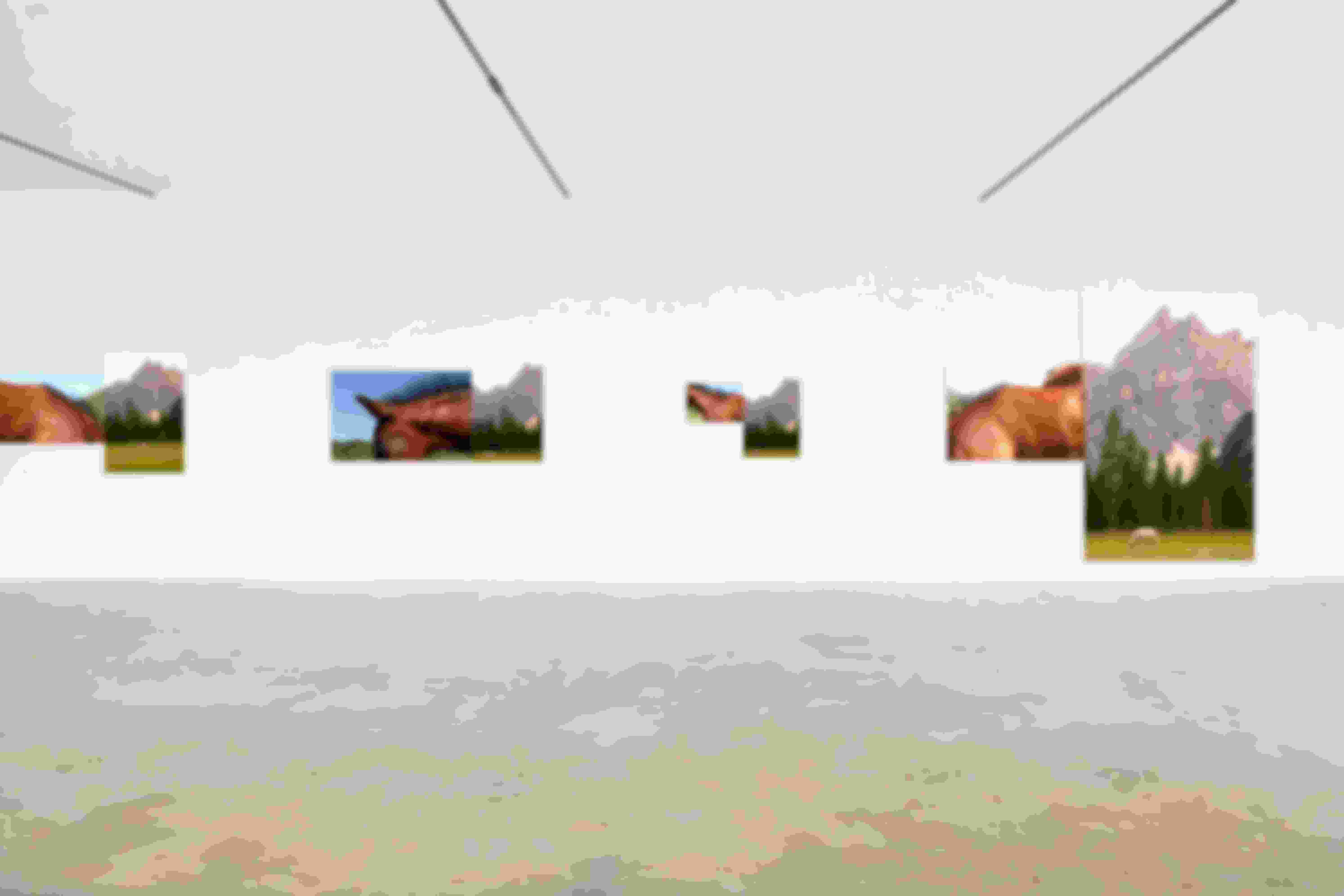
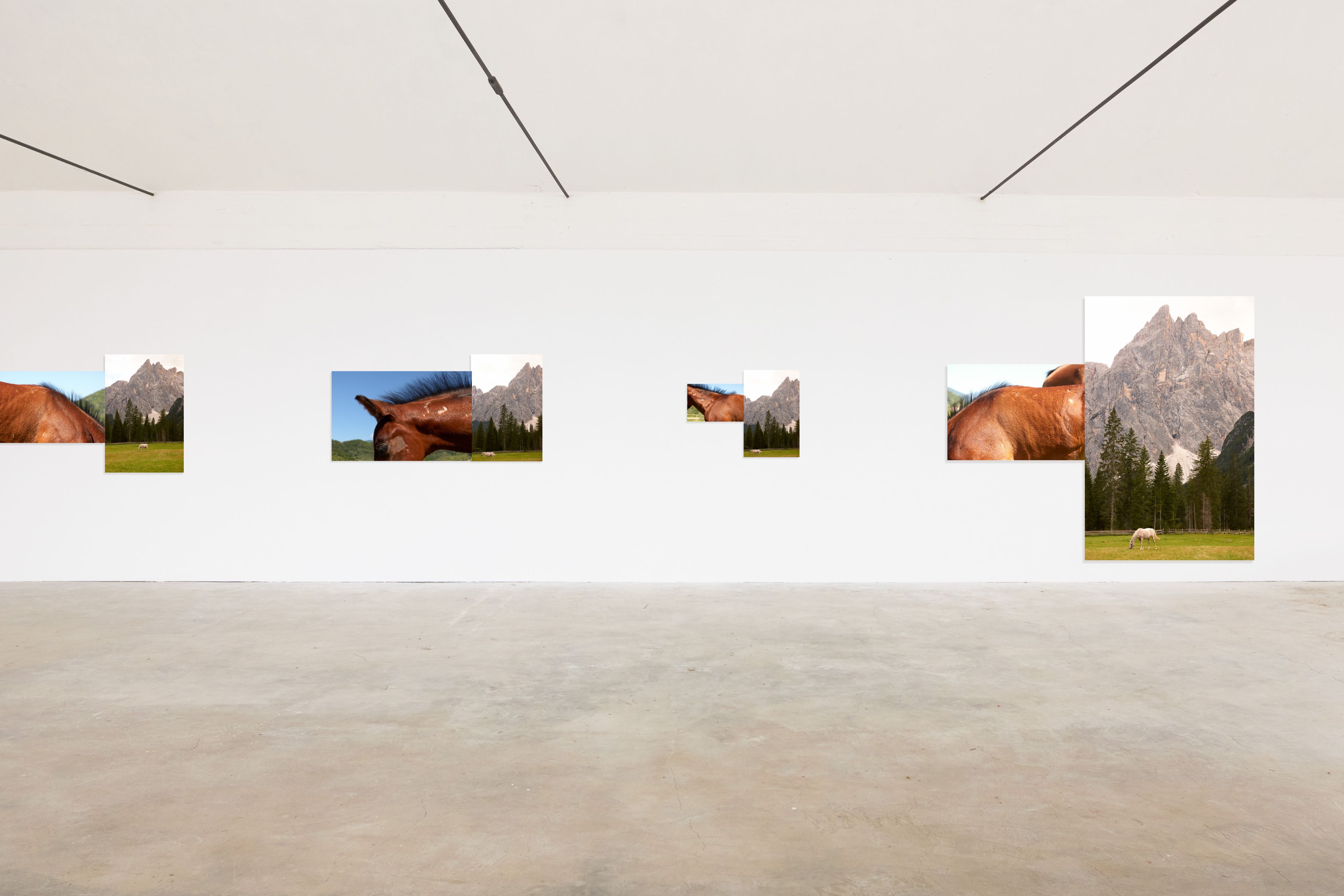
Equine Insights
Capturing the Essence of Horse Therapy Through Photography
Photography has a remarkable ability to capture moments of introspection and connection, revealing insights that transcend words. In a captivating project that intertwines the beauty of horses with the grandeur of the Dolomites, a photographer delves into the transformative power of horse therapy and the profound lessons learned from these majestic animals.
The project unfolds as a visual narrative, pairing images of horses' bodies with the breathtaking landscapes of the Dolomites, a region that holds personal significance for the photographer. Having resided in this scenic locale and immersed in riding classes, the photographer discovered a deeper resonance with equine companionship—a journey that led to self-discovery and valuable life lessons.
At the heart of this project is the concept of horse therapy, a form of experiential therapy that harnesses the innate sensitivity and communication skills of horses to facilitate personal growth and healing. Horses, with their ability to mirror human emotions and energy, serve as powerful catalysts for self-awareness and emotional exploration.
Through the lens of the camera, the photographer captures moments where the horses' presence and expressions mirror aspects of human experiences. The gentle curve of a horse's neck echoes feelings of grace and resilience, while the intensity in their eyes reflects depths of emotion and connection. Paired with the towering mountains of the Dolomites, these images evoke a sense of harmony and interconnectedness between nature and human psyche.
The project not only showcases the beauty of equine companionship but also highlights the importance of relationships with animals in fostering emotional well-being. Horses, as sentient beings, possess a unique ability to communicate nonverbally and establish profound connections with humans. This communication extends beyond words, delving into realms of empathy, trust, and mutual understanding.
As the photographer reflects on their own experiences in riding classes, they recount the invaluable life lessons learned from these magnificent animals. Horses teach us about the power of presence, mindfulness, and authentic communication. They remind us of the importance of building trust-based relationships and listening to subtle cues in our interactions.
Moreover, the project serves as a tribute to the interconnectedness of all living beings within the natural world. The synergy between horses and their environment—the mountains, the sky, and the earth—serves as a poignant reminder of our shared journey on this planet and the need for harmony and respect in our relationships with both animals and nature.
In conclusion, this photography project not only captures the visual beauty of horses and the Dolomites but also delves into the deeper layers of human-animal connections and the transformative impact of horse therapy. Through these images, viewers are invited to contemplate the wisdom and insights that horses offer, inspiring a deeper appreciation for the interconnected tapestry of life and the profound lessons that nature continues to impart upon us.


All is born in the Alboran Sea (in progress)
This art project on wild dolphins is a captivating exploration of both their natural habitat and their intricate communication methods. Through a combination of video footage and small watercolor paintings created with sea water, I immerse viewers in the beauty and mystery of the dolphins' world. The video component showcases my personal journey of overcoming fears by diving into the deep sea to encounter these majestic creatures firsthand. This experience not only allows me to witness their communication methods but also serves as a poignant reminder of the urgent need to protect their marine environment. By becoming a voice for change in advocating for cleaner waters, I highlight the devastating impact of human activities on their habitat, amplifying the message that they cannot express in words. Through my project, I shed light on the Alboran Sea's significance as a vital ecosystem for dolphins and other marine life, emphasizing the importance of conservation efforts to preserve these intelligent and socially intricate beings.
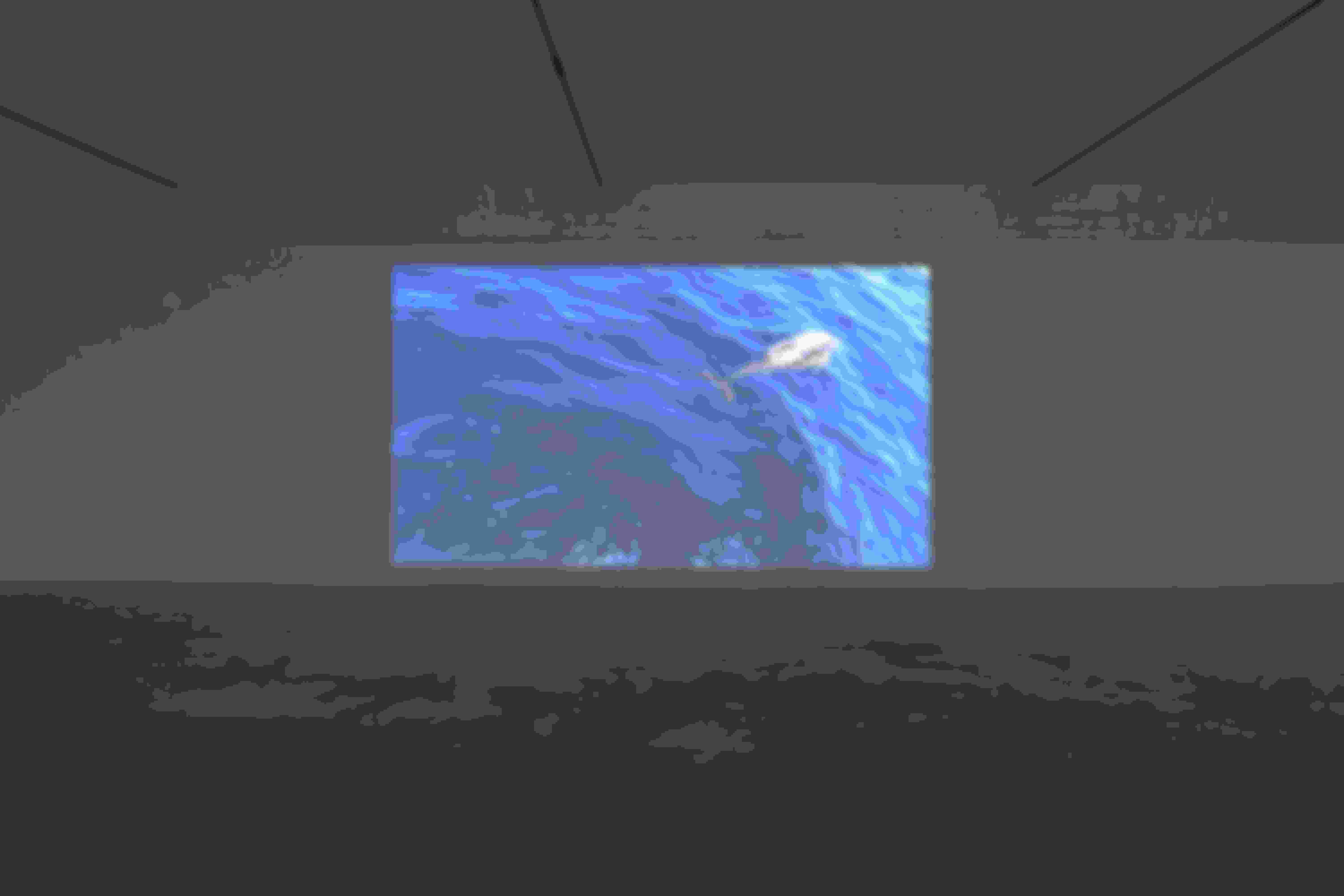
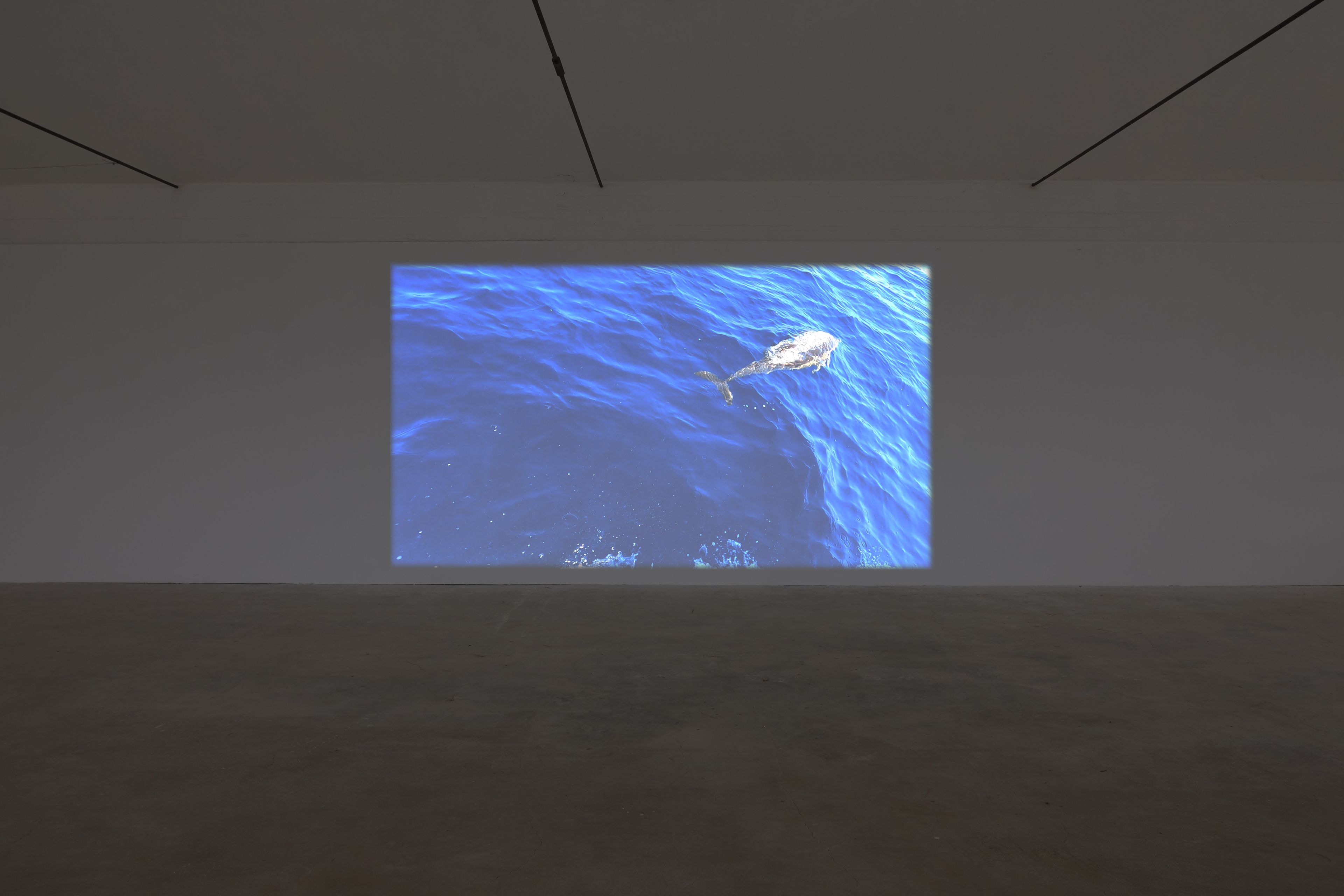
The Alboran sea is located between the continents of Africa, Morocco, and Spain. It joins the Mediterranean and Atlantic Oceans via the Strait of Gibraltar. It is home to many species including dolphins. Tightly bound to their pods, these large brained and highly social mammals we call dolphins (word originating from ‘delpus’ which is the Greek word for womb) use both verbal and nonverbal gestures to communicate with each other. With their high frequency hearing they communicate with whistles, clicks, and loud broadband packets of sound called burst pulses. It is believed that they have a complex system of communication, even better than how humans communicate. Considered to be the world’s most intelligent marine mammals, it is believed that there is a far deeper interconnectedness throughout dolphins and their pod then humans and our social groups.
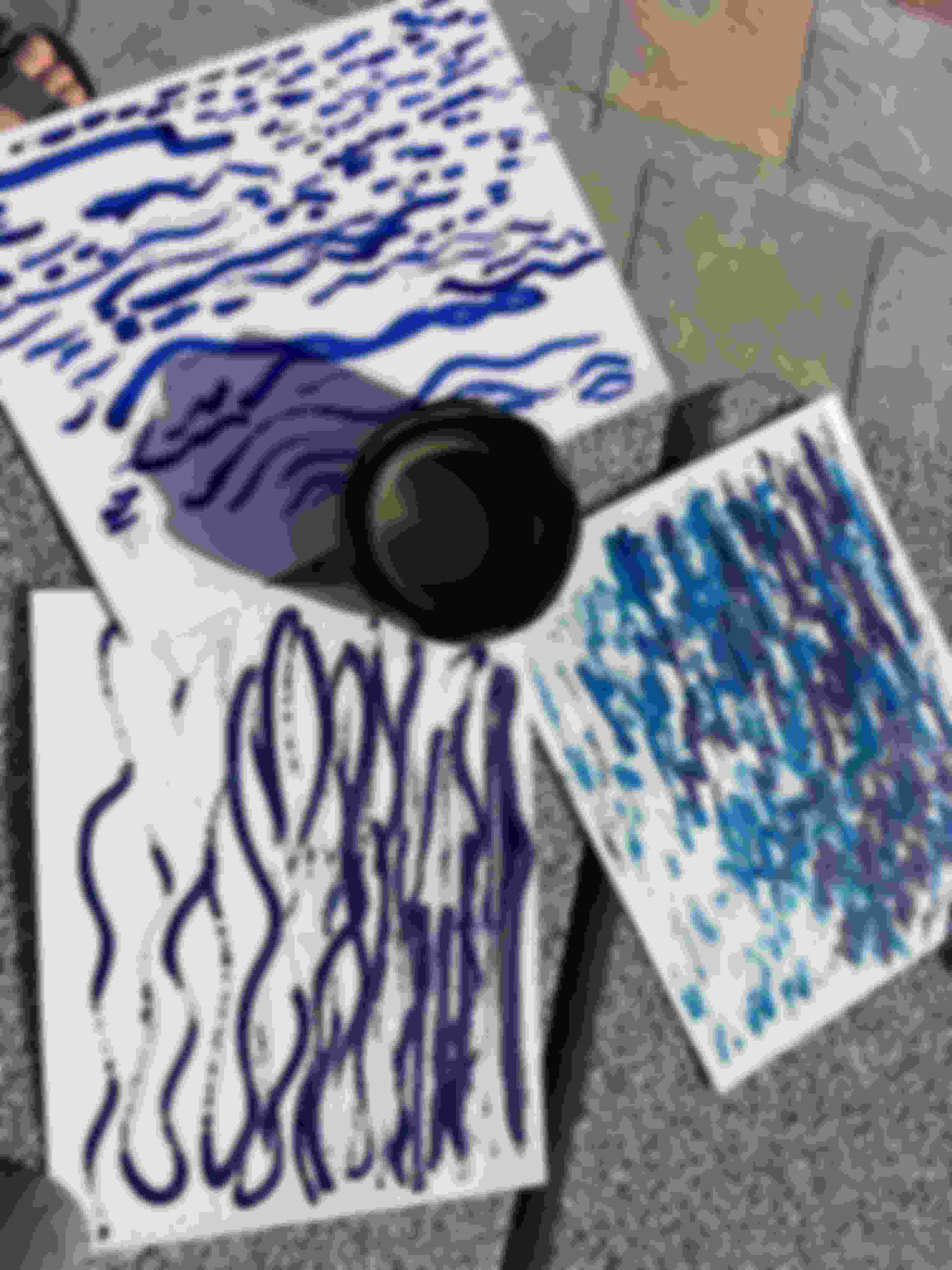
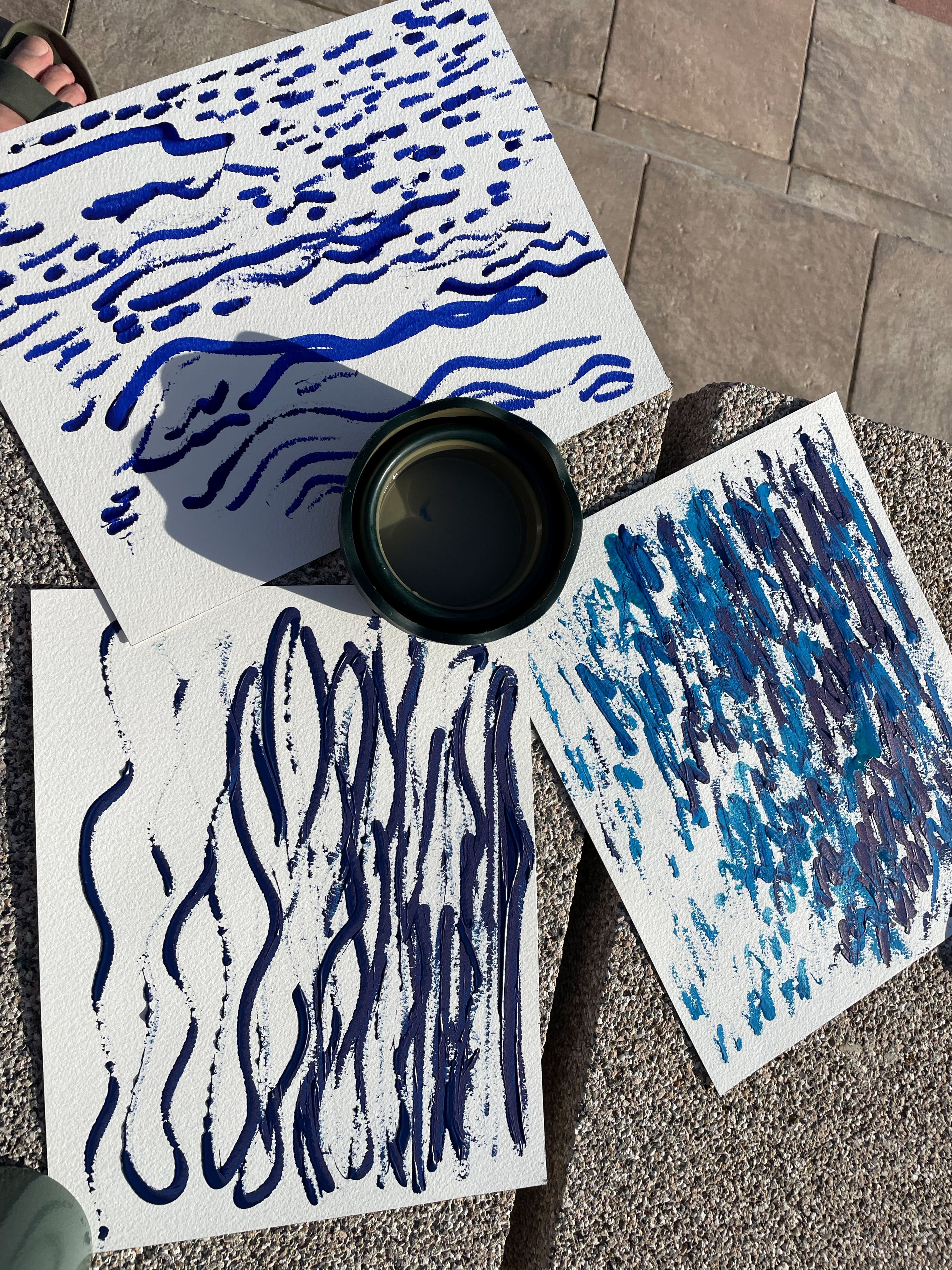
Title: Sea-Watercolor
Medium: Watercolor and gouache
Excerpt from journal entry, July 2022:
I swam with a family of wild dolphins in the Alboran sea. It was the summer of 2022.
I found a posting on a website stating a boat, which is called the Akun is sailing across the Alboran sea. The captain is Israel Lopez Gonzalez. The post stated that they were sailing from Garrucha, Spain to Melilla (which is beside Morocco). The total trip was four days.
On our way to Melilla we saw dolphins and a sperm whale, but it was on our way back to Spain where I experienced swimming with them.
It was June 30th around 10am in the morning and a pod of dolphins jumping and swimming fast seemed to come directly to our boat. I have had the desire to meet dolphins for some time now, and right after I reminded the captain that if we see dolphins again I want to swim with them, it was then that Maria, the girlfriend of the captain, looked up and yelled, ‘they are coming.’
I saw a pod of approximately twenty dolphins coming directly to us. My instincts said to jump off the boat, and so I quickly took off my sweater and pants that held back the morning chill, and jumped into the cool blue sea.
The captain and skipper on the boat tried to stop it as soon as they could but the boat was still quite far away, too far for me to swim to. One called out ‘grab the invisible fishing line’ -- and so I did. I felt more safe knowing I had some connection to the boat as I seemed to not really realize how this leap into the sea would make me feel.
The dolphins weren’t around when I first jumped, but enormous seagulls were and they flew to my head thinking that I was some sort of food. Once I managed to get closer to the boat was when the family of dolphins reappeared, swimming all around me. I saw mothers and babies, I saw groups of dolphins swimming together so in sync that it looked like a performance, one dolphins in particular stayed quite close to me for some time. I made eye contact with them, I heard them echo and the whole sea seem to vibrate. I told them that I will be back soon to visit. It was an experience that I will never forget, the connection and ways we seemed to telepathically communicate.
